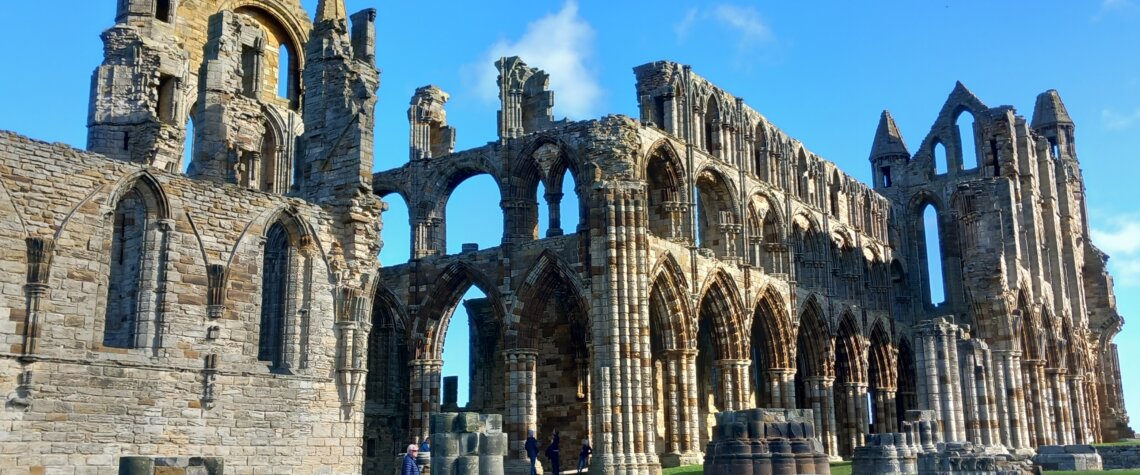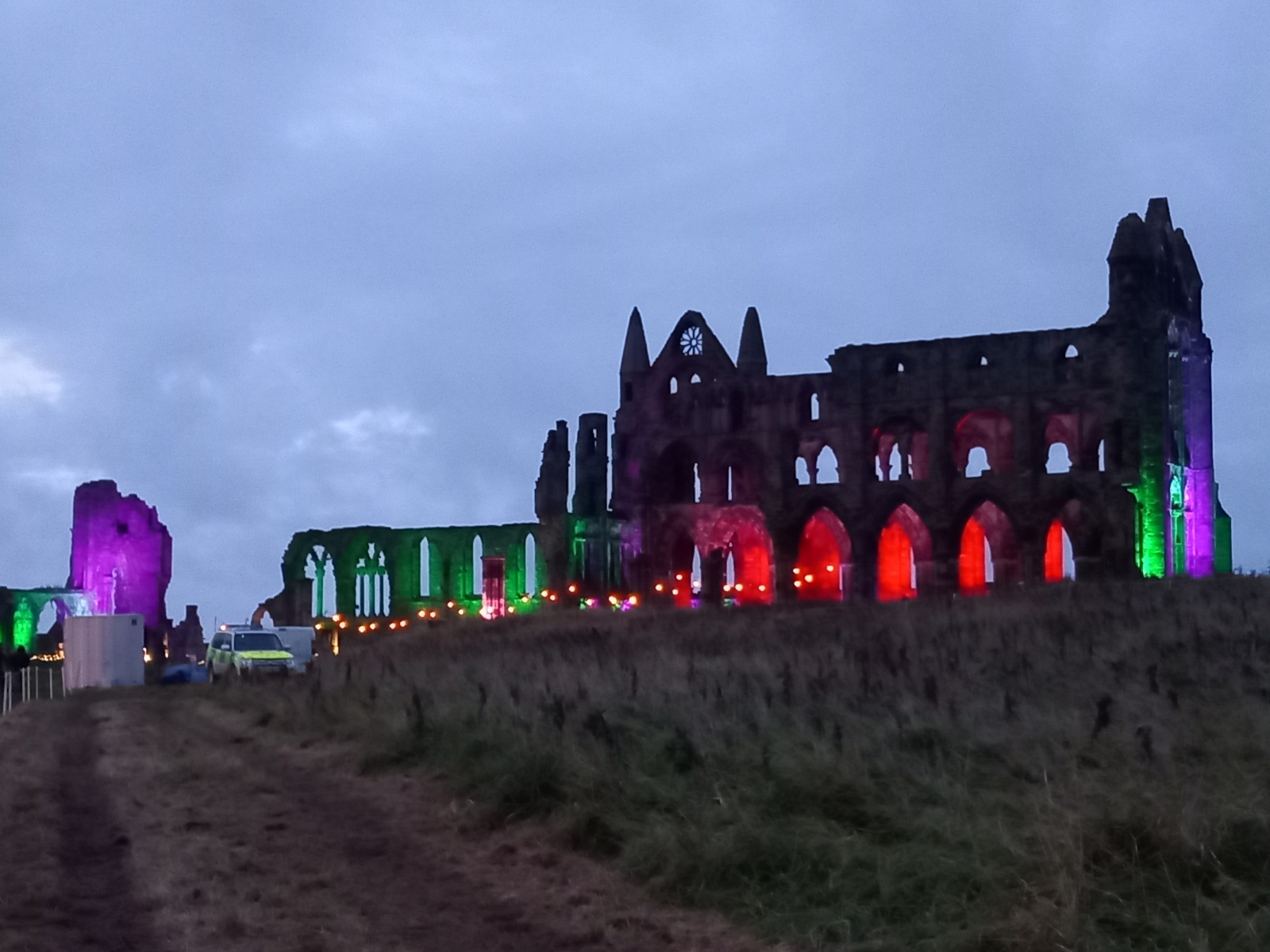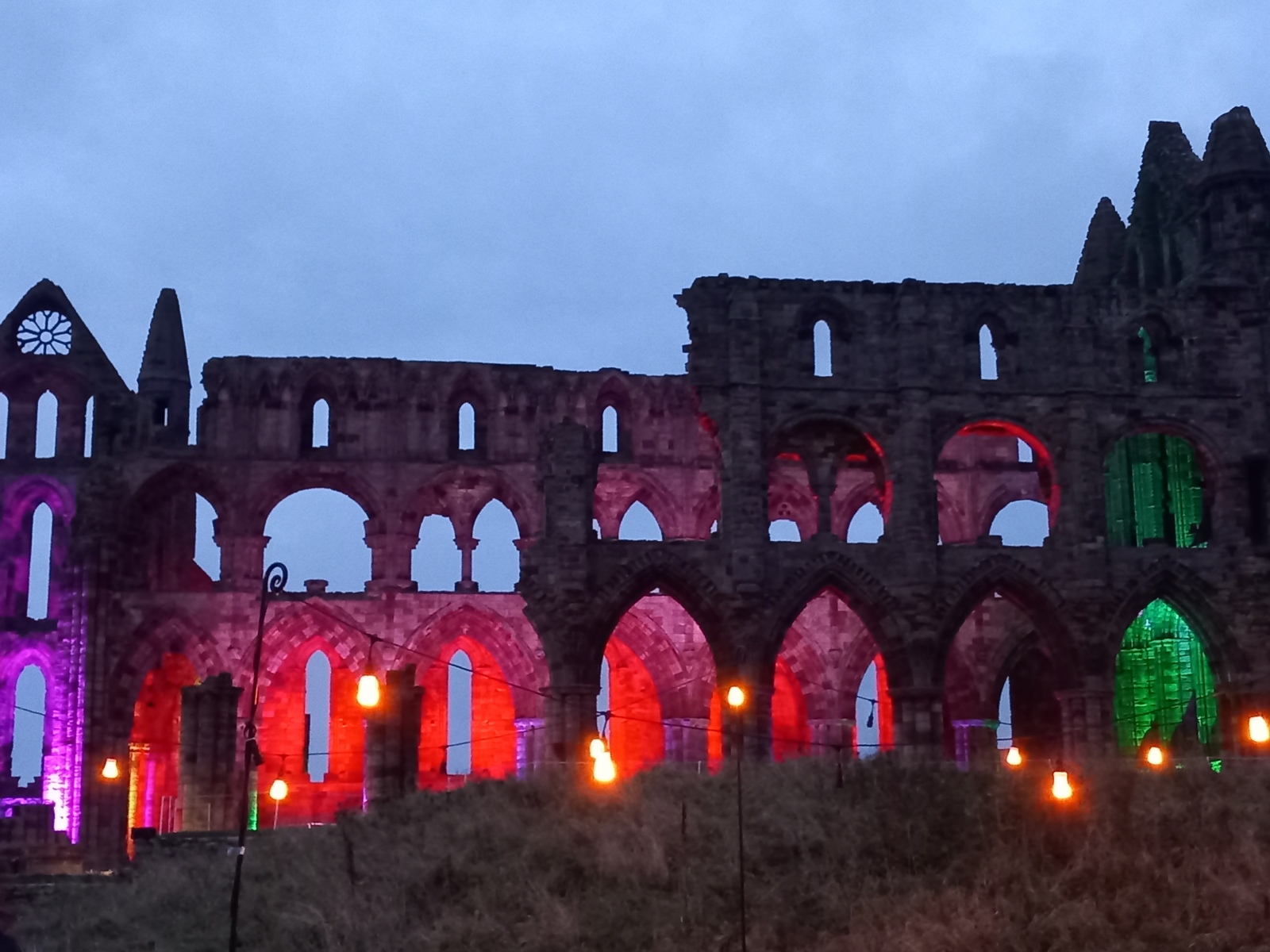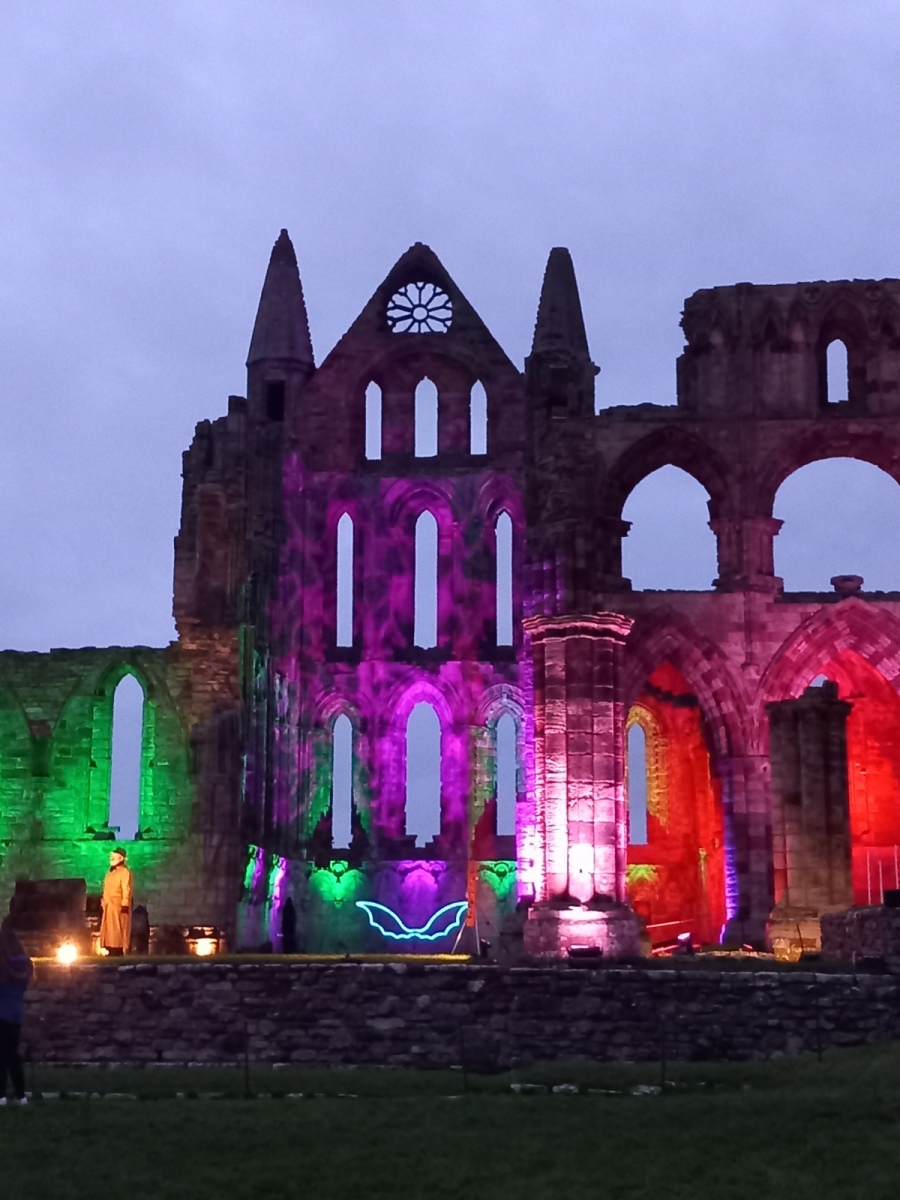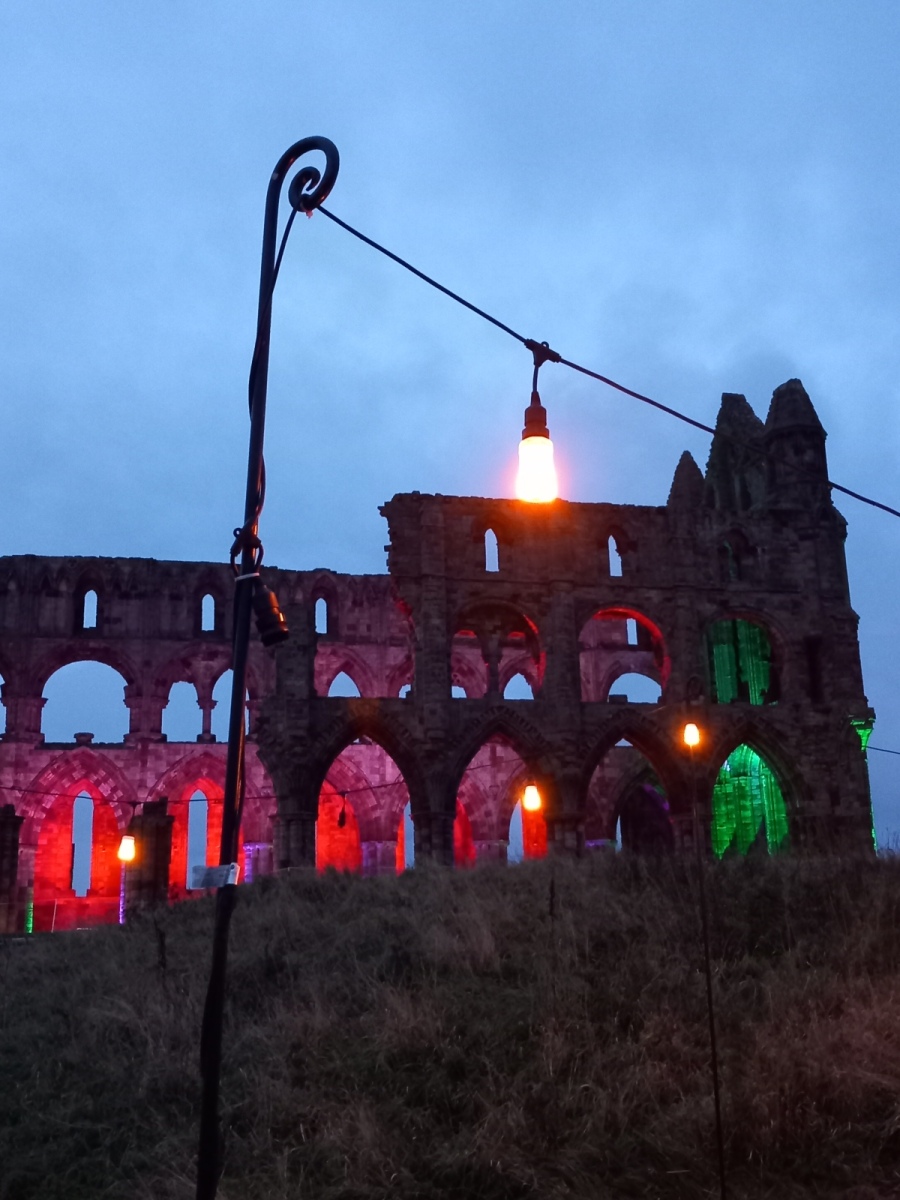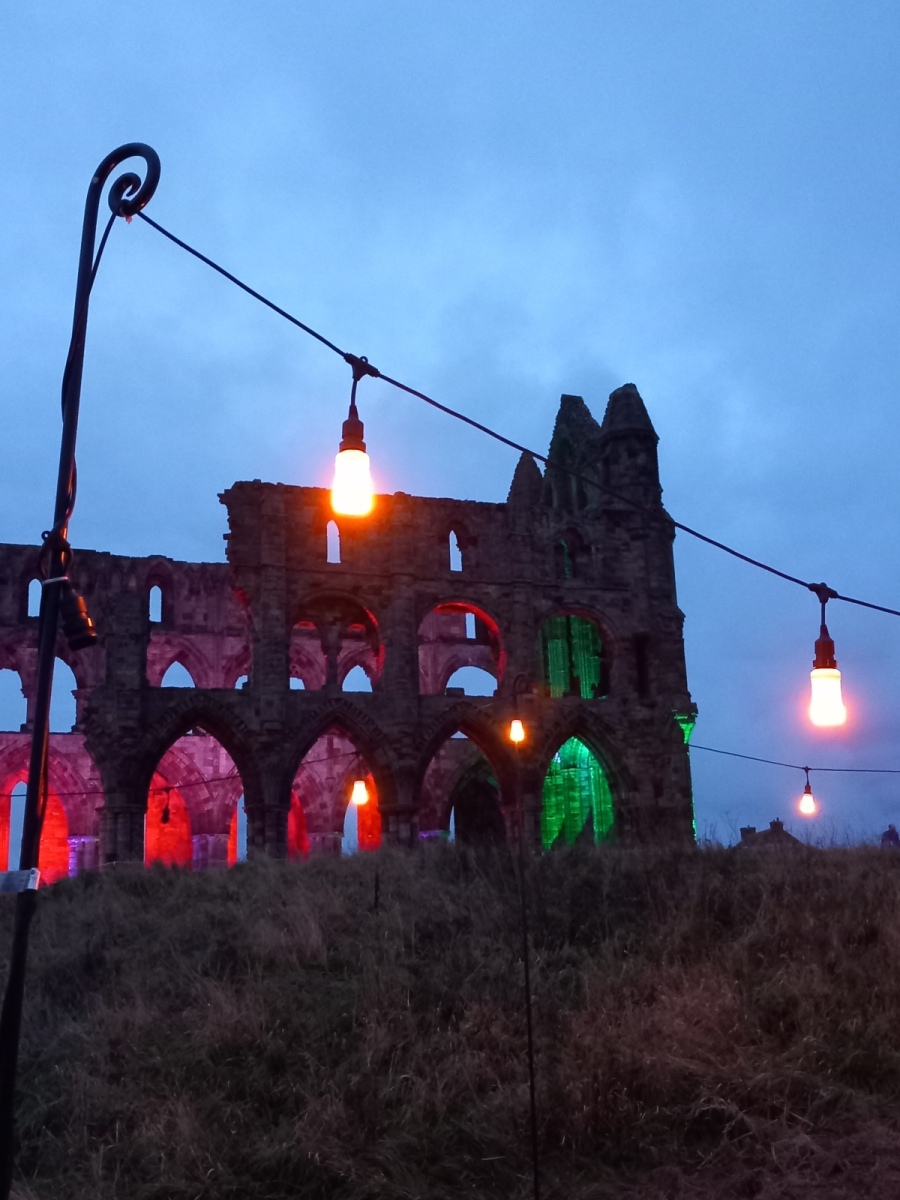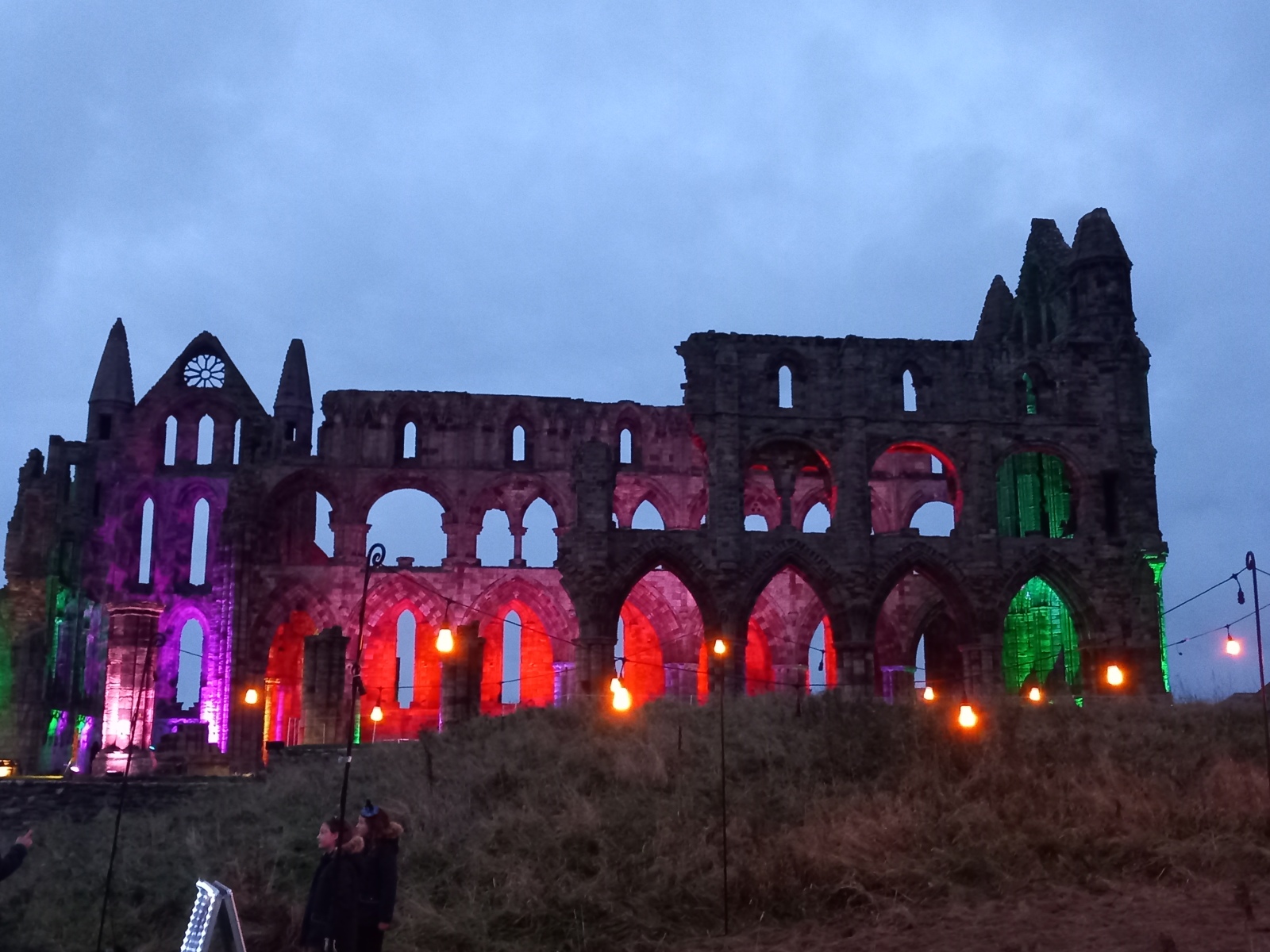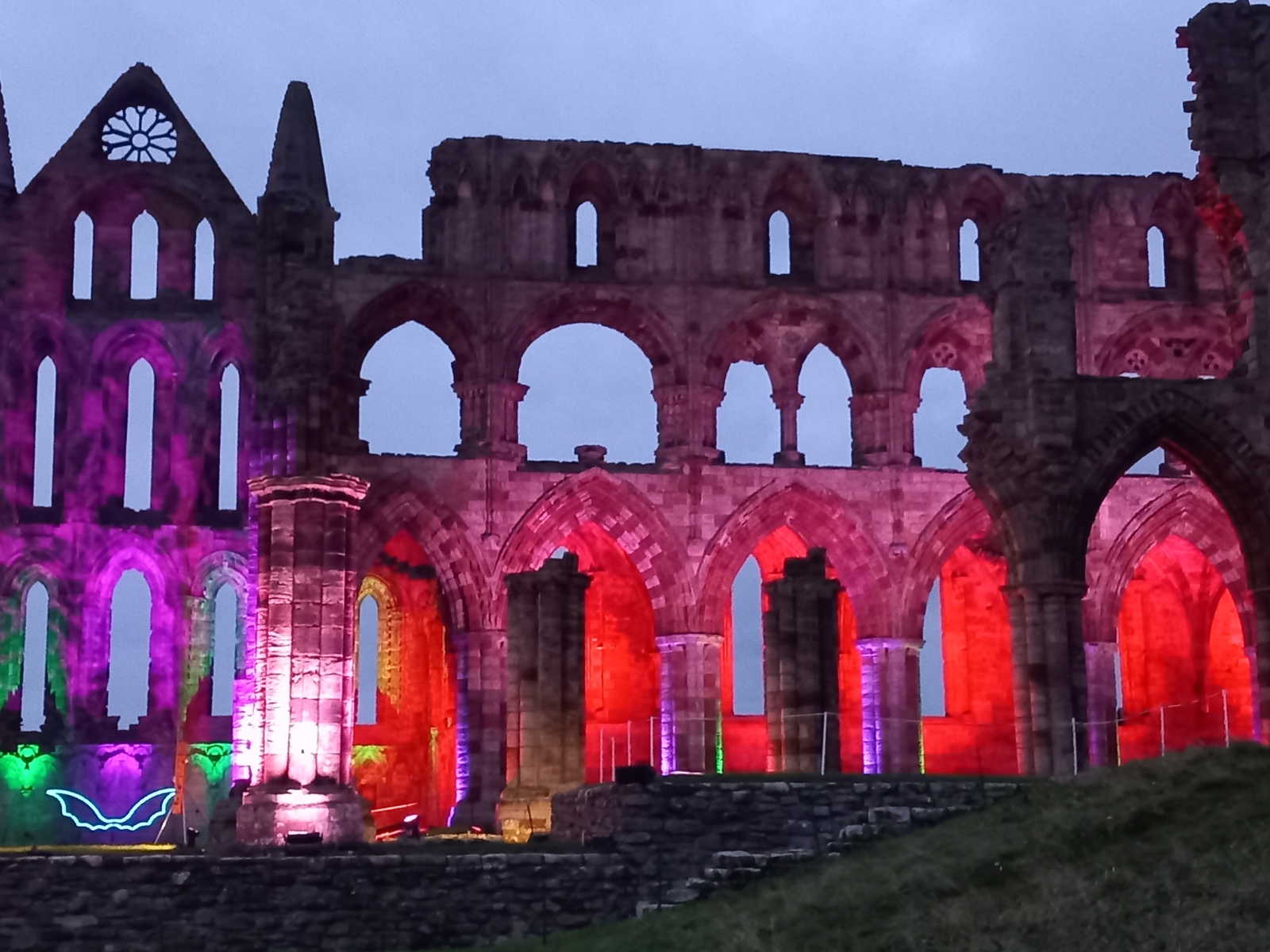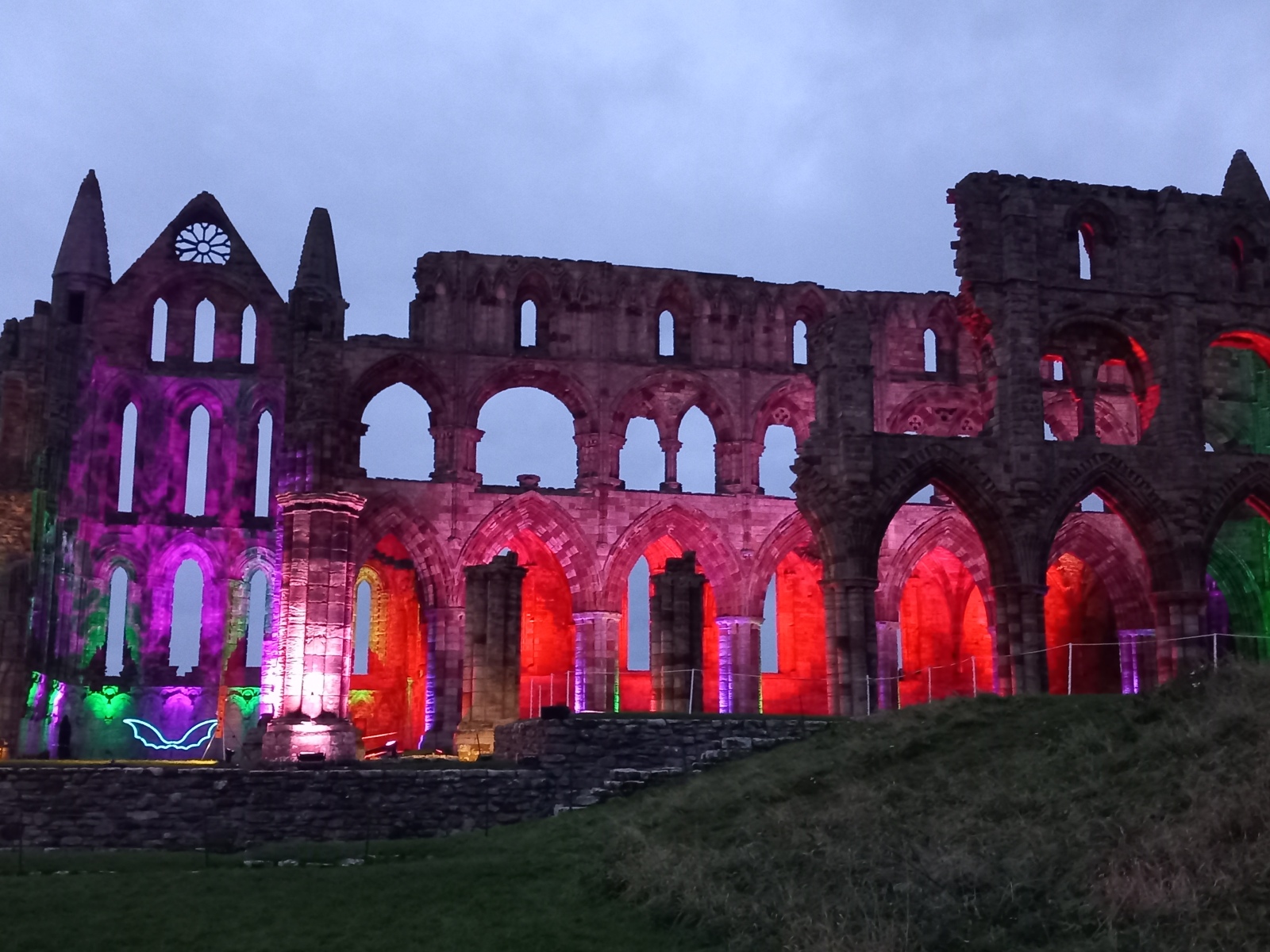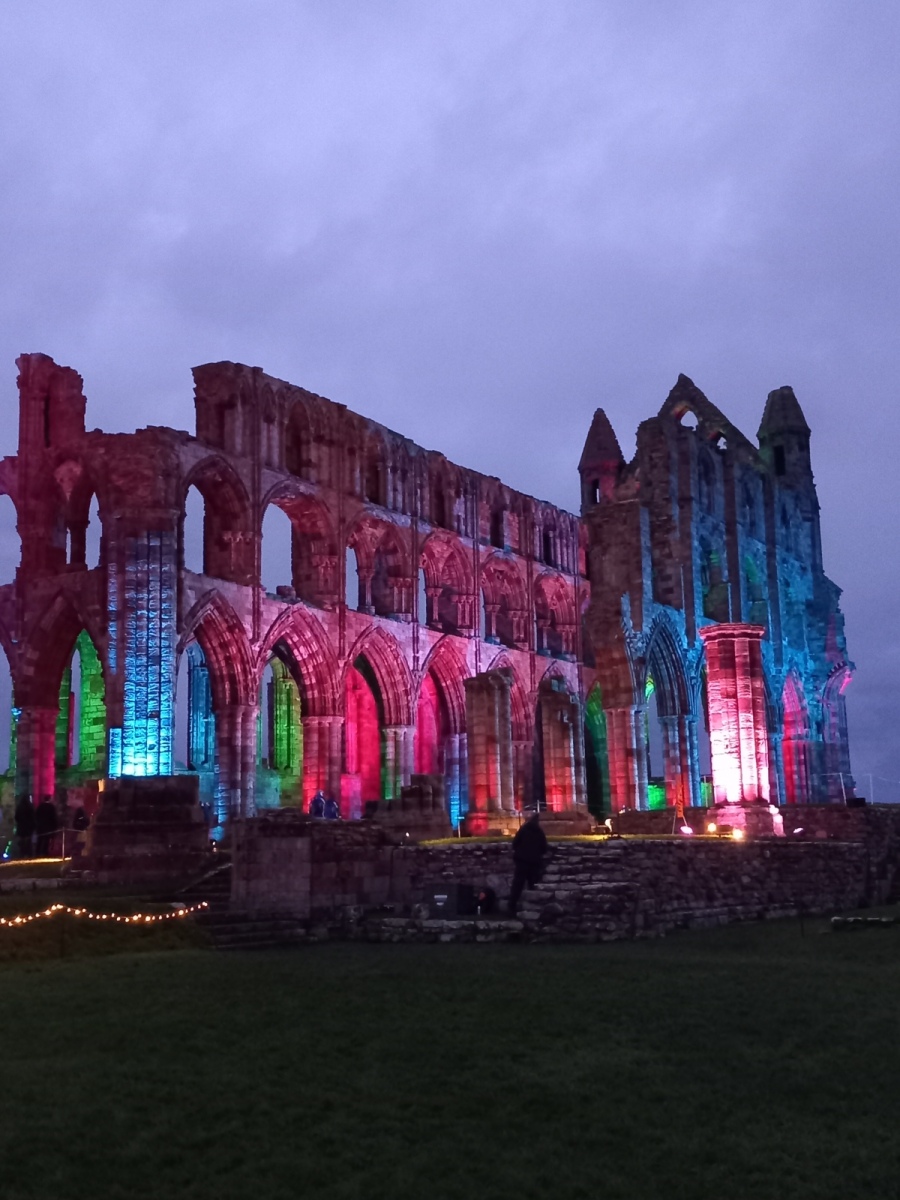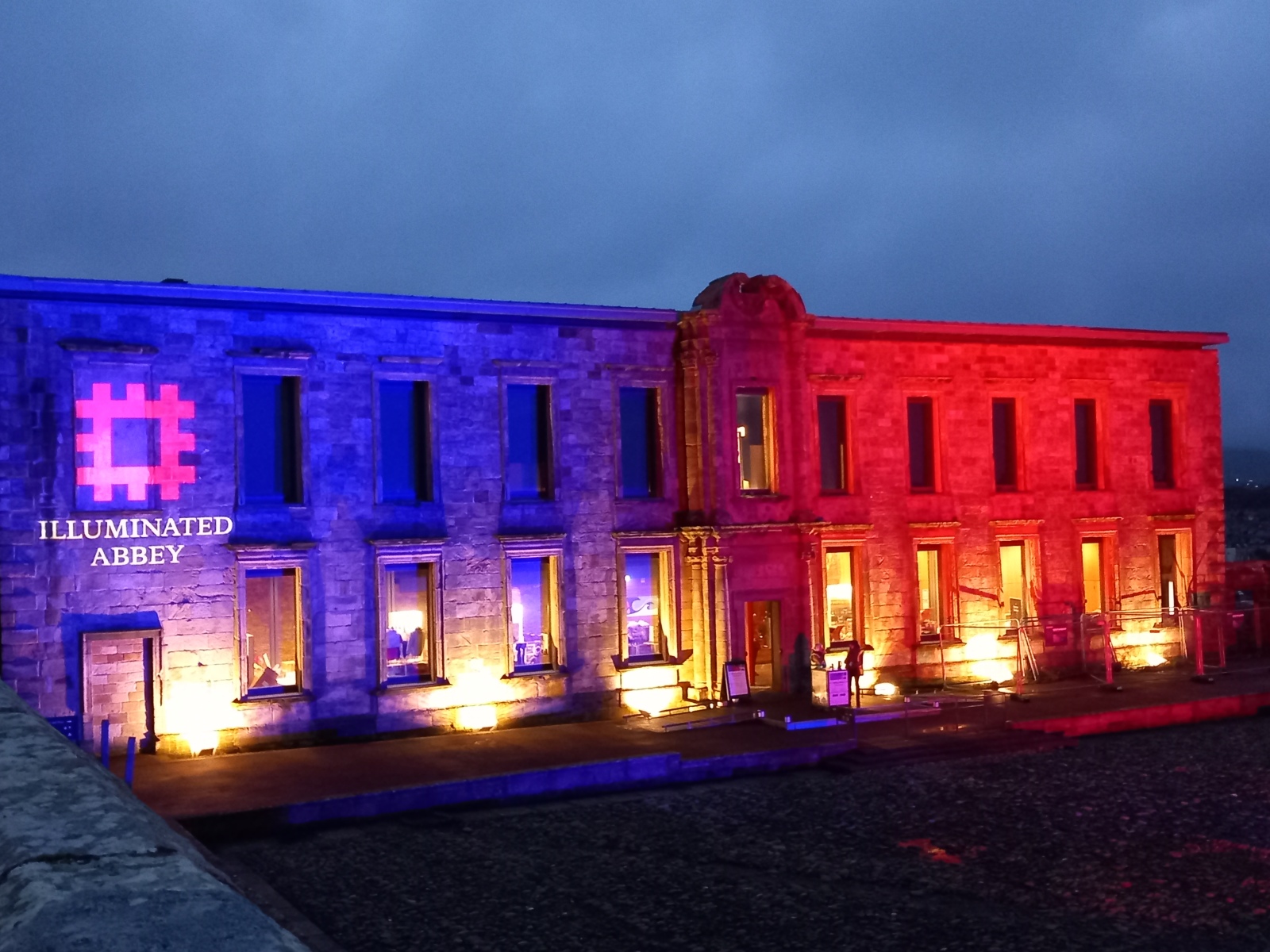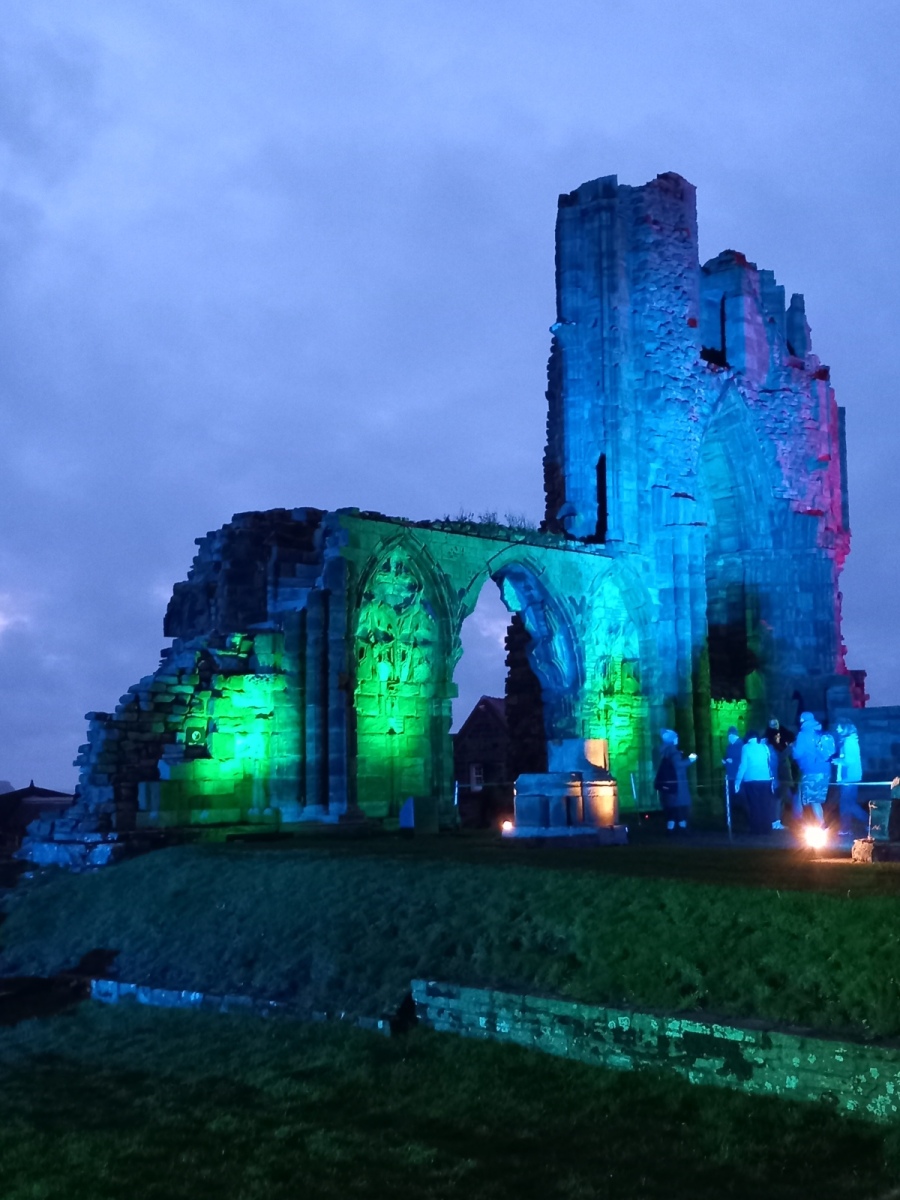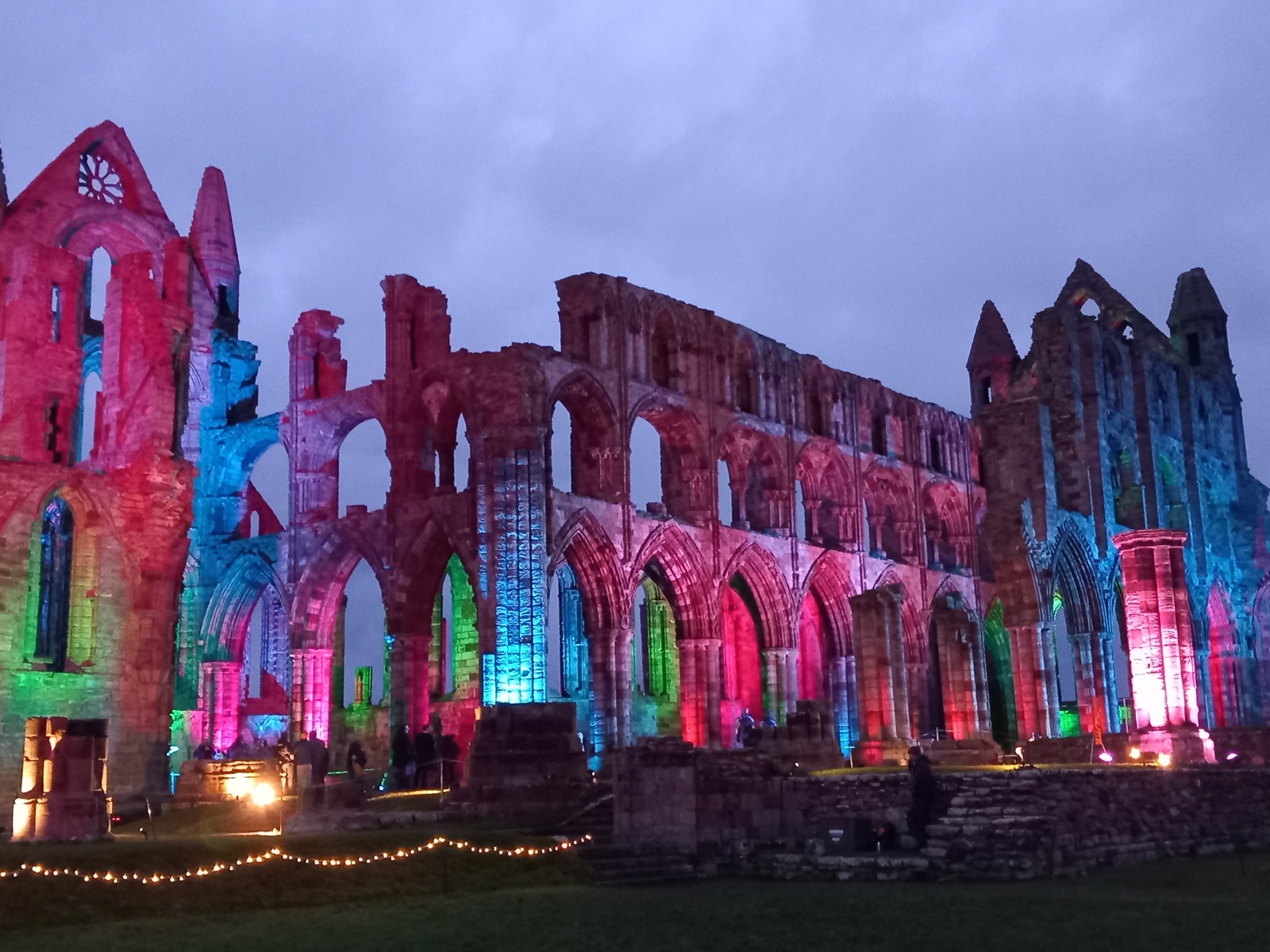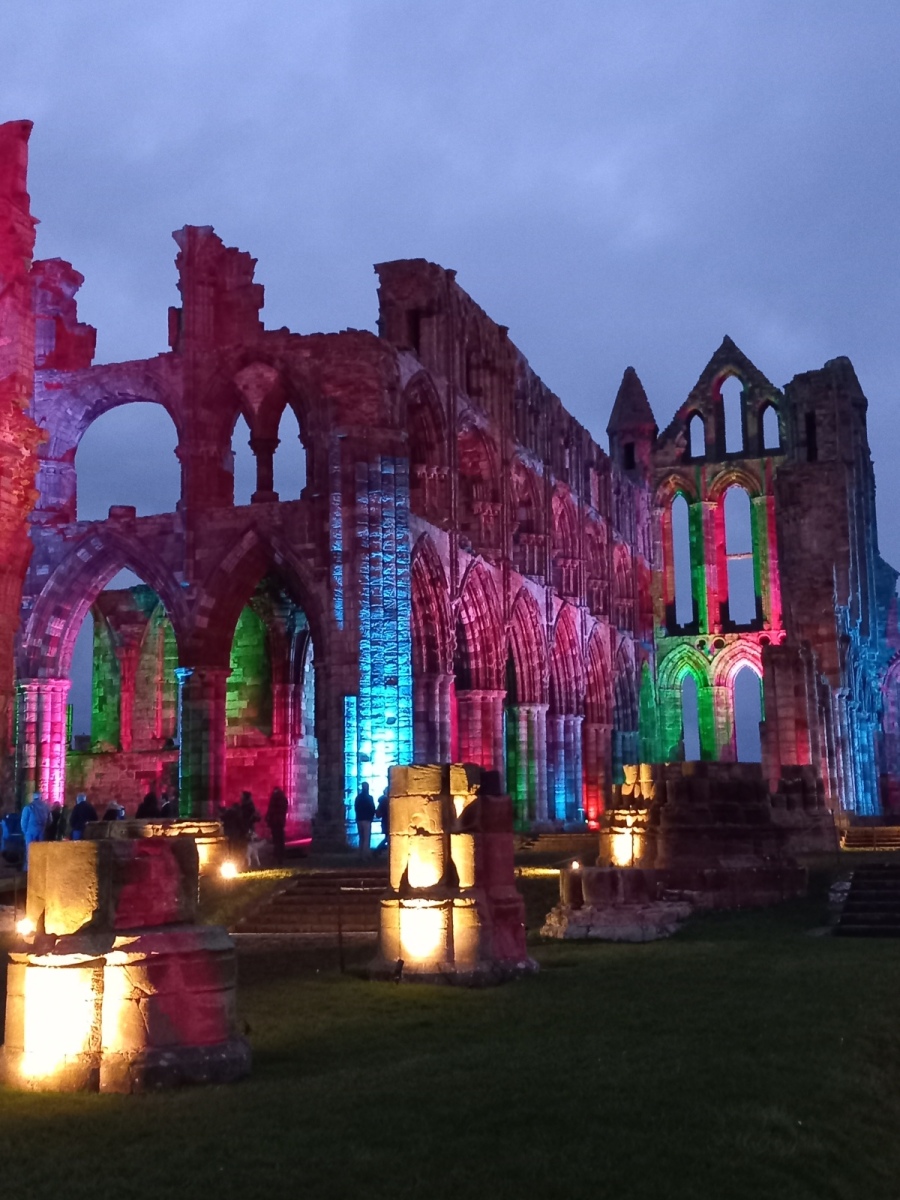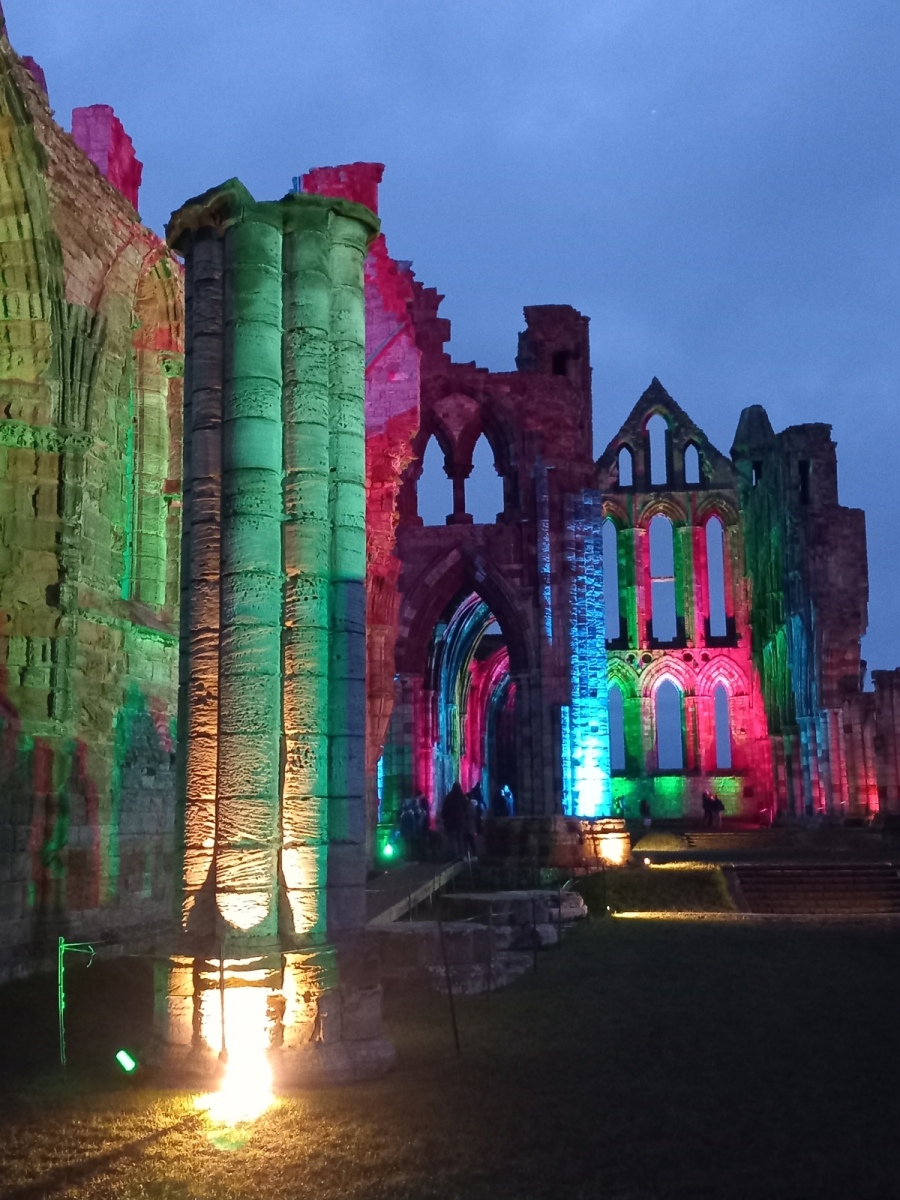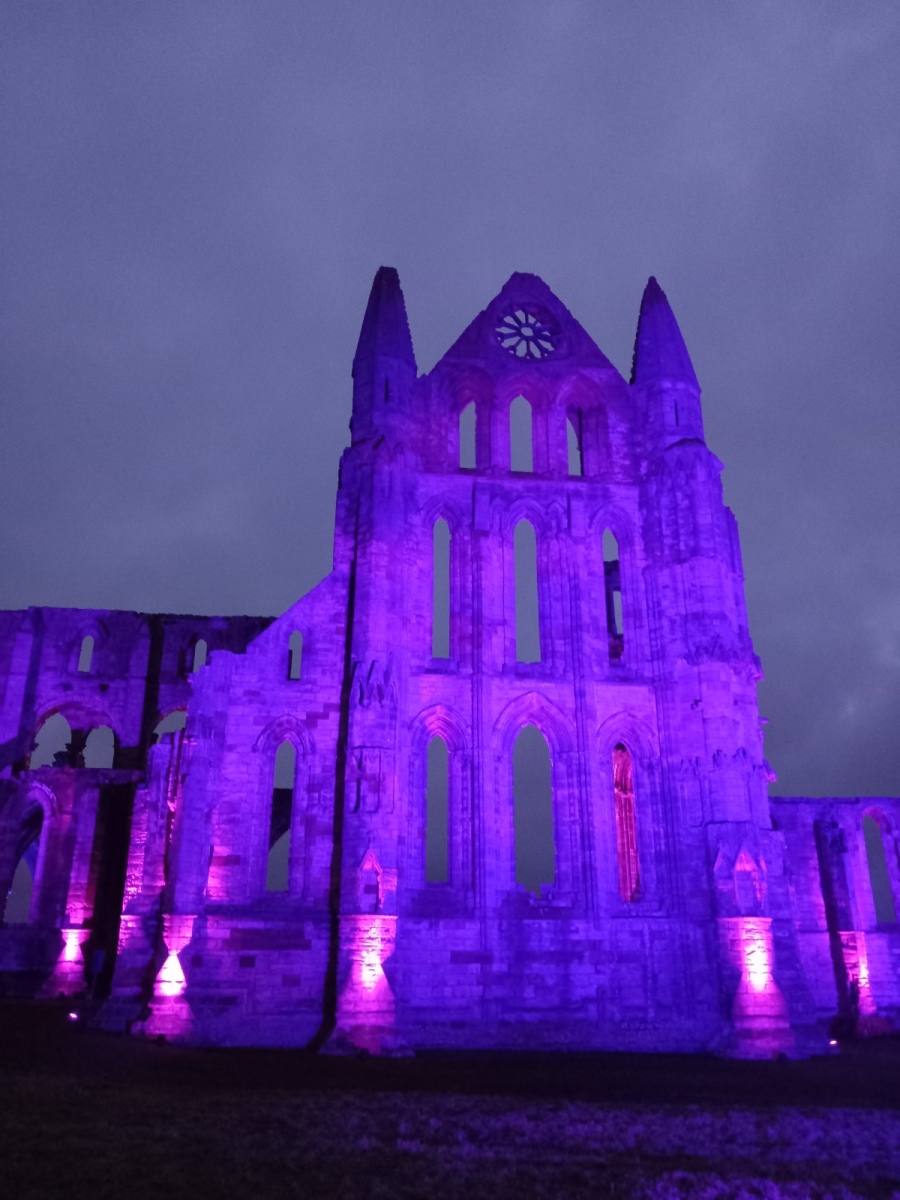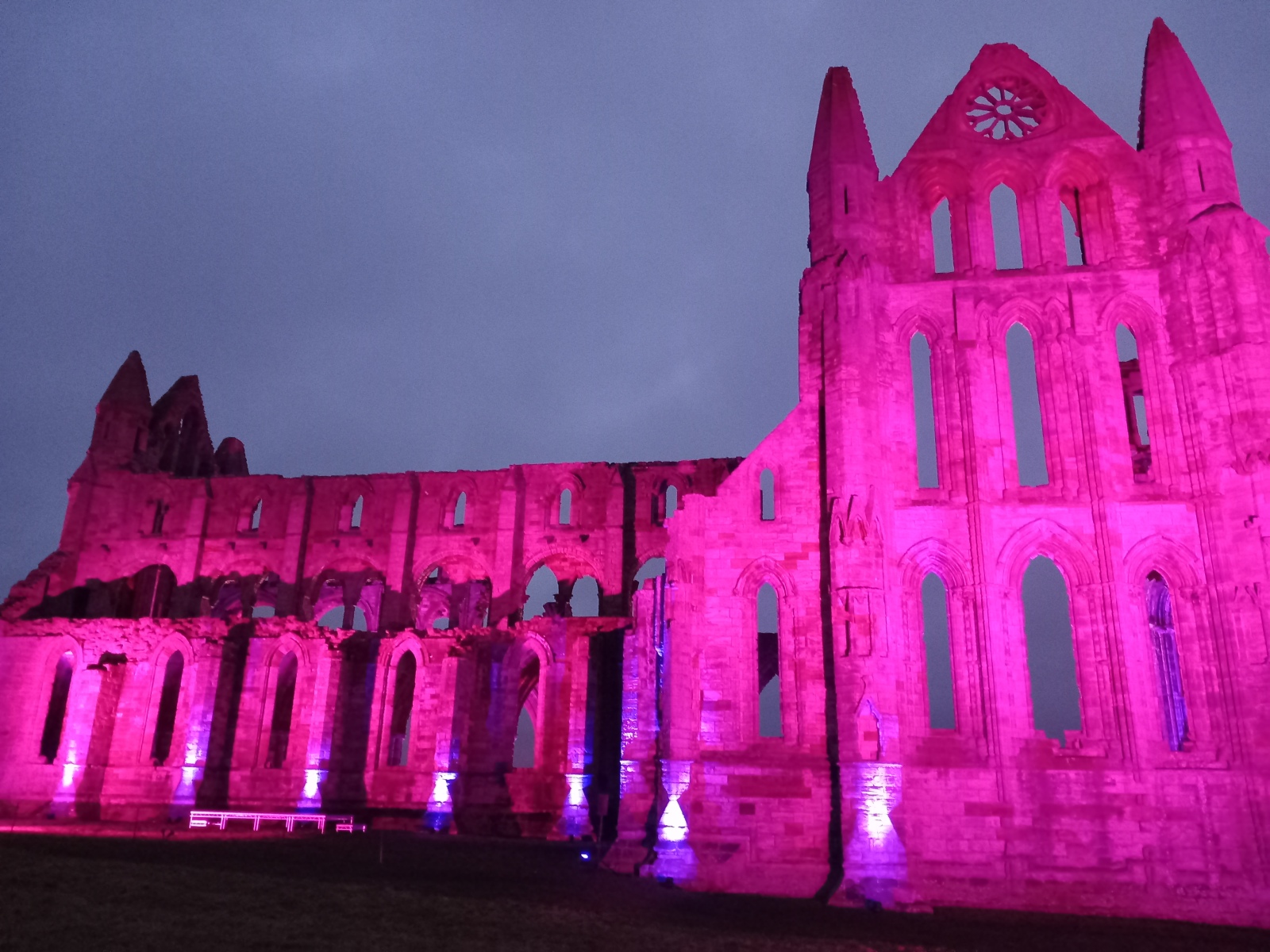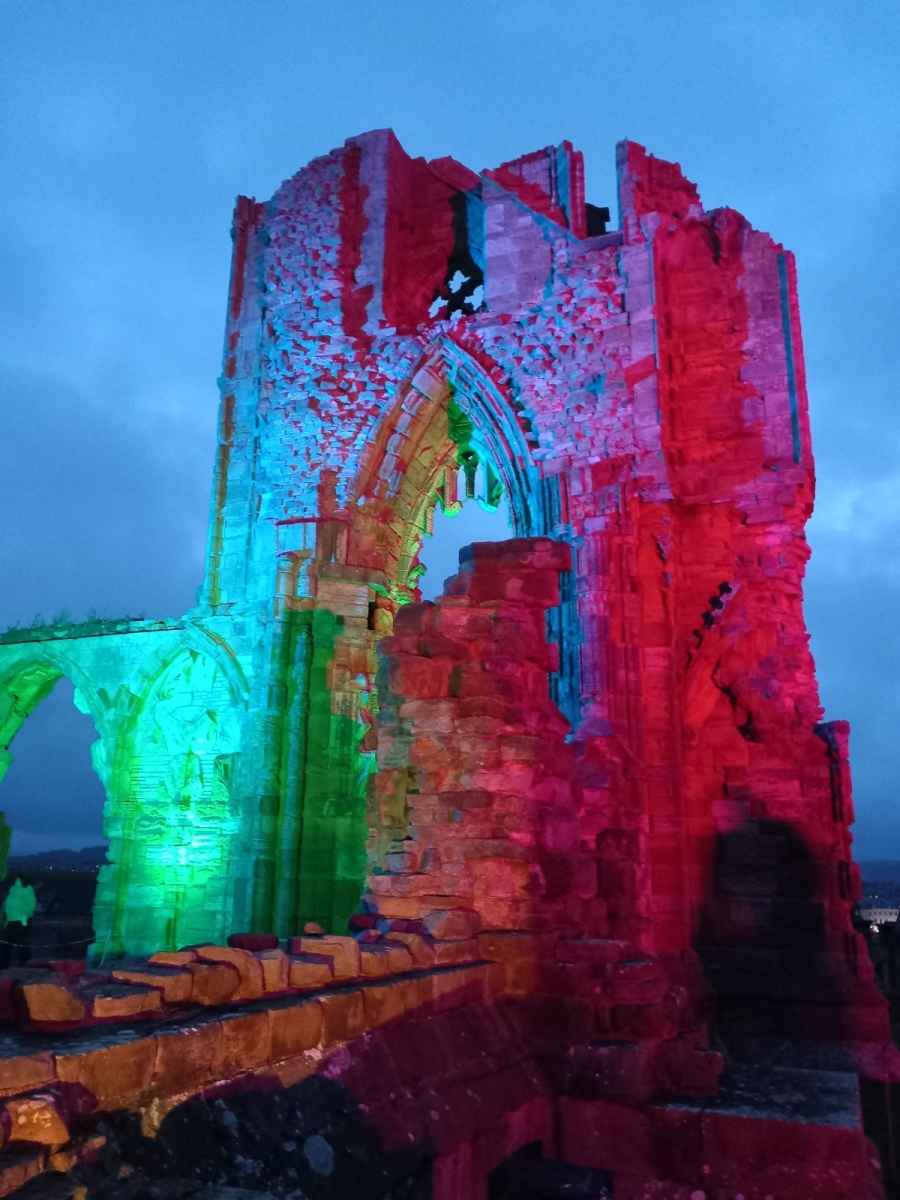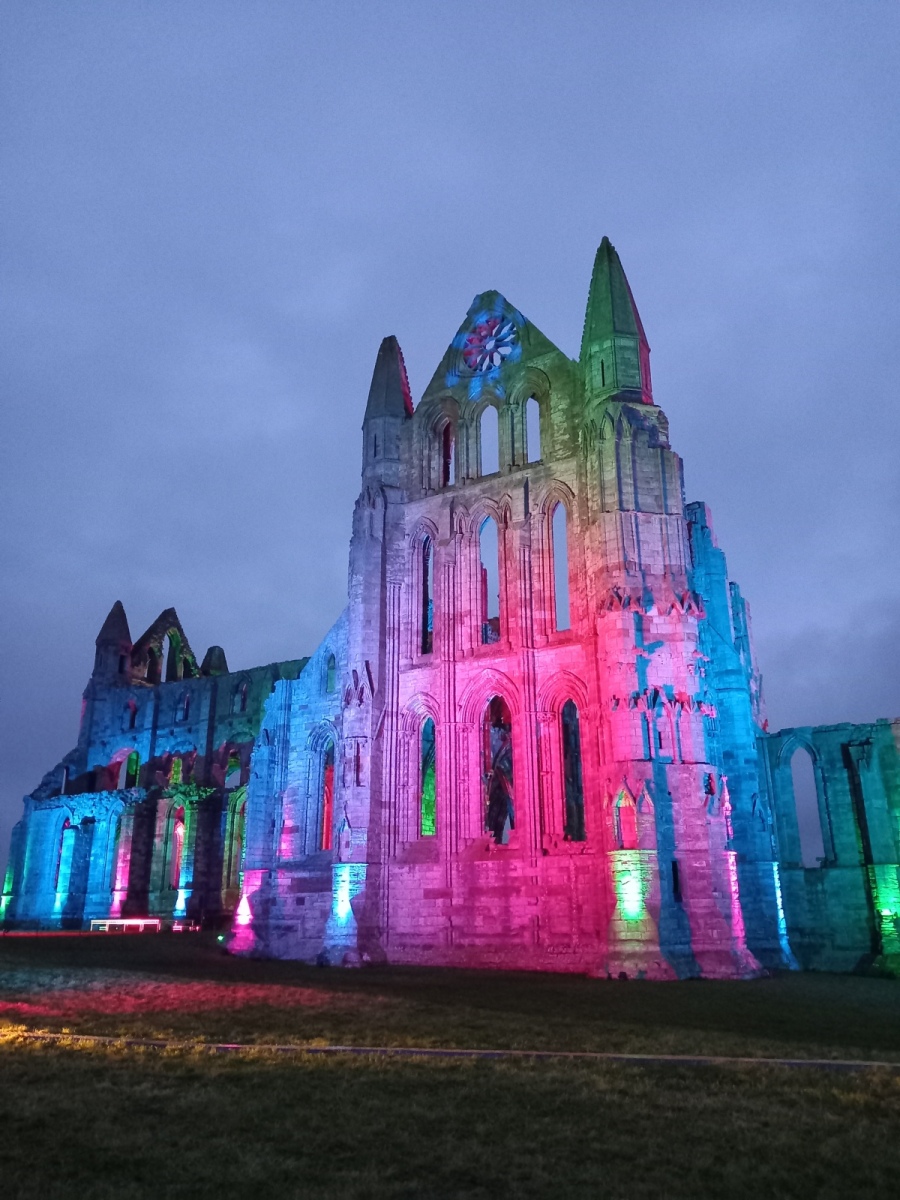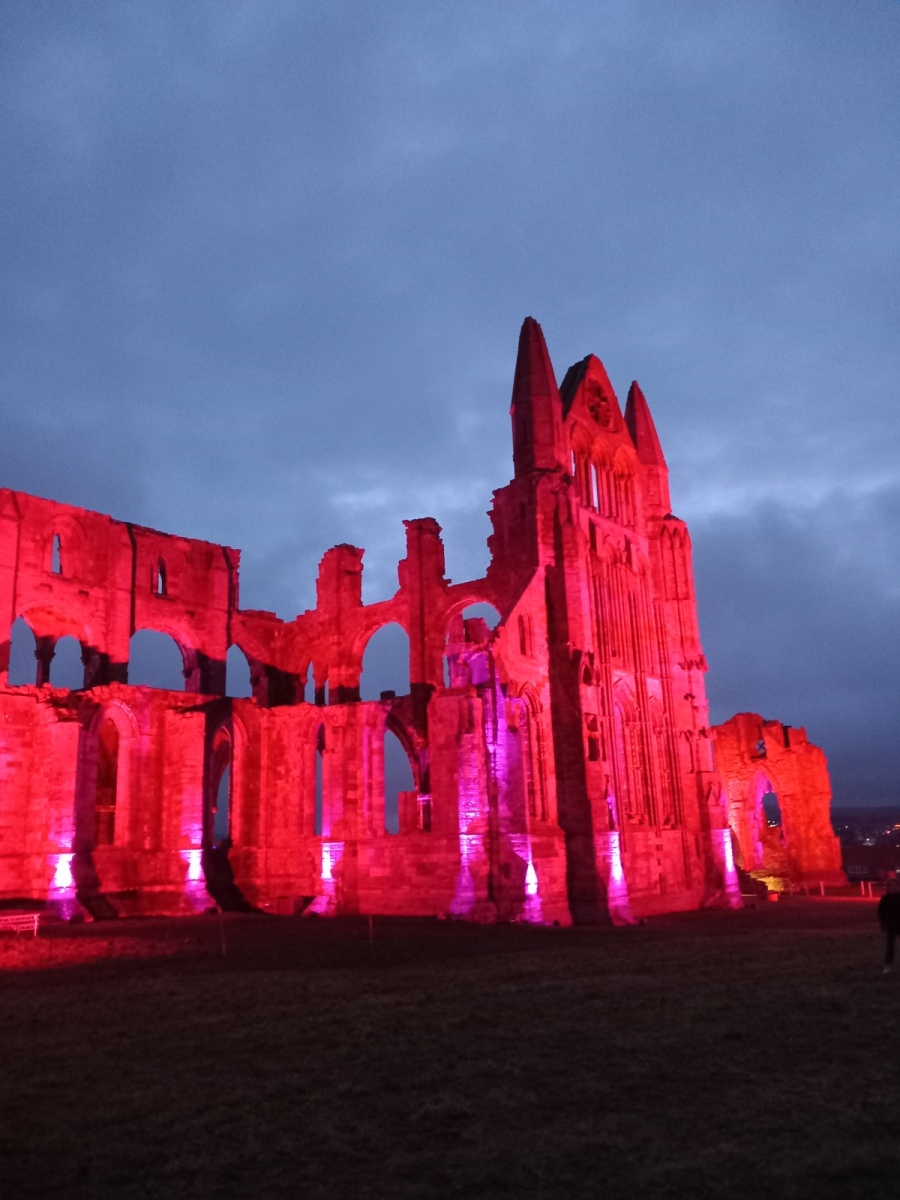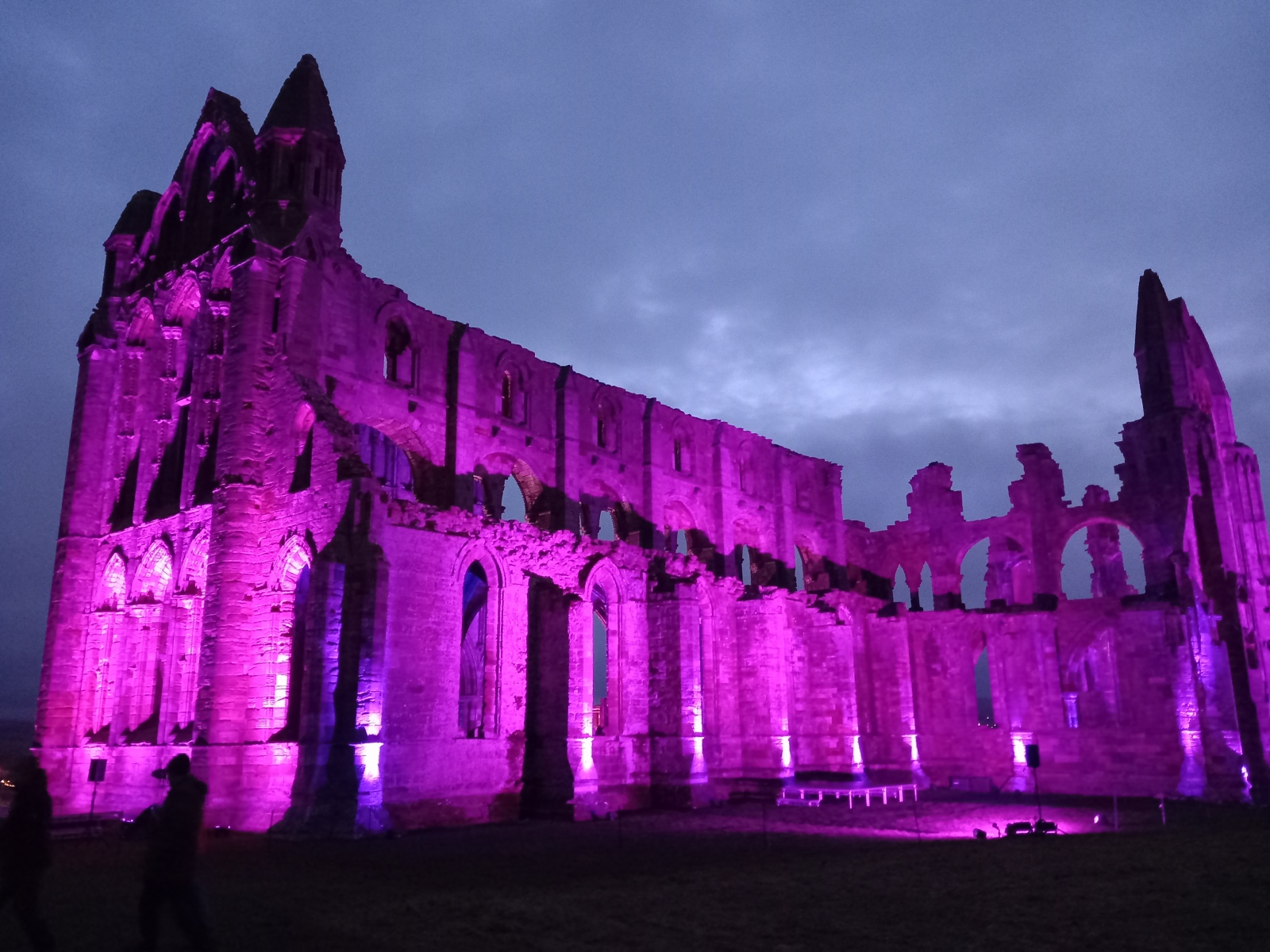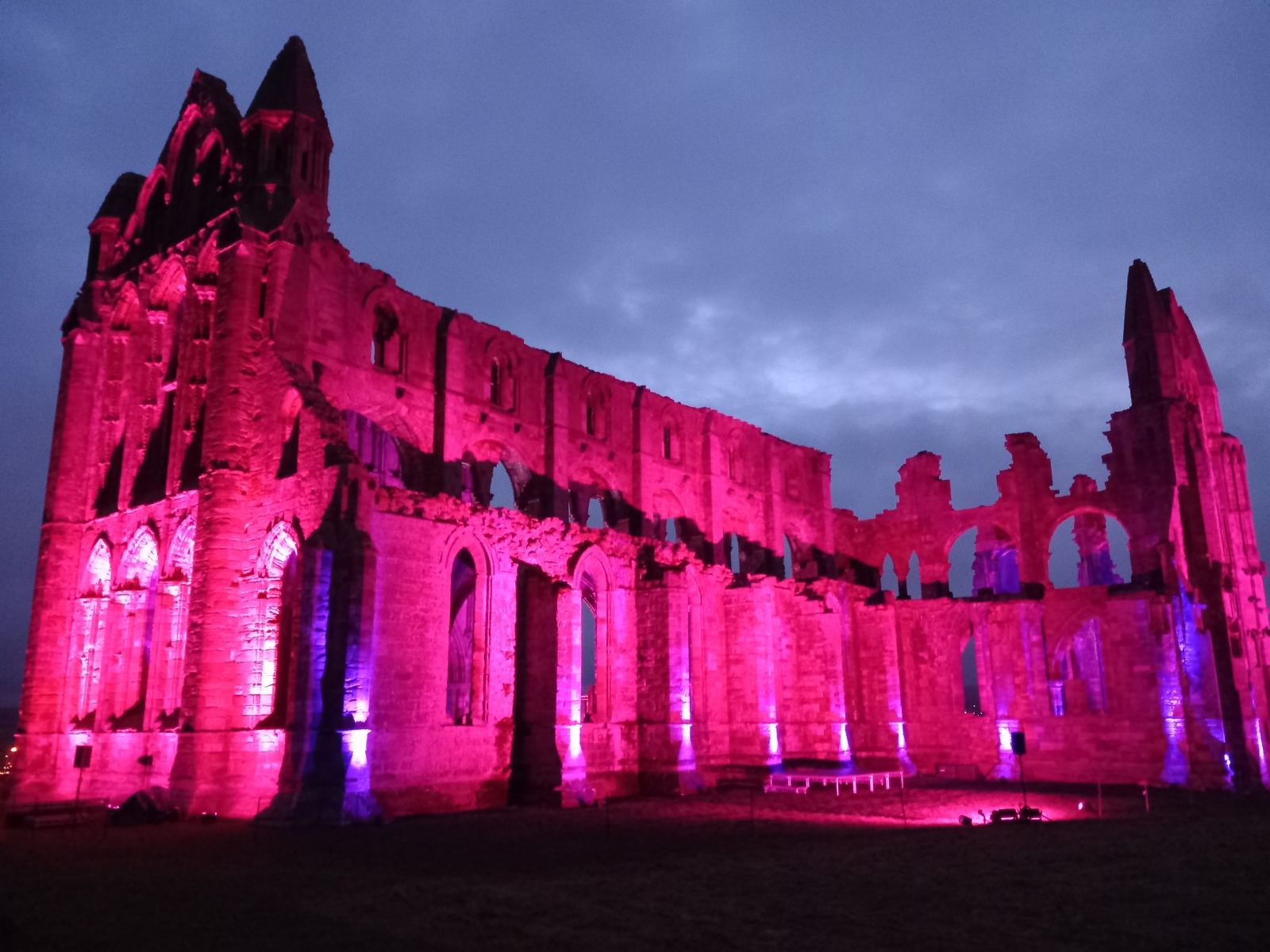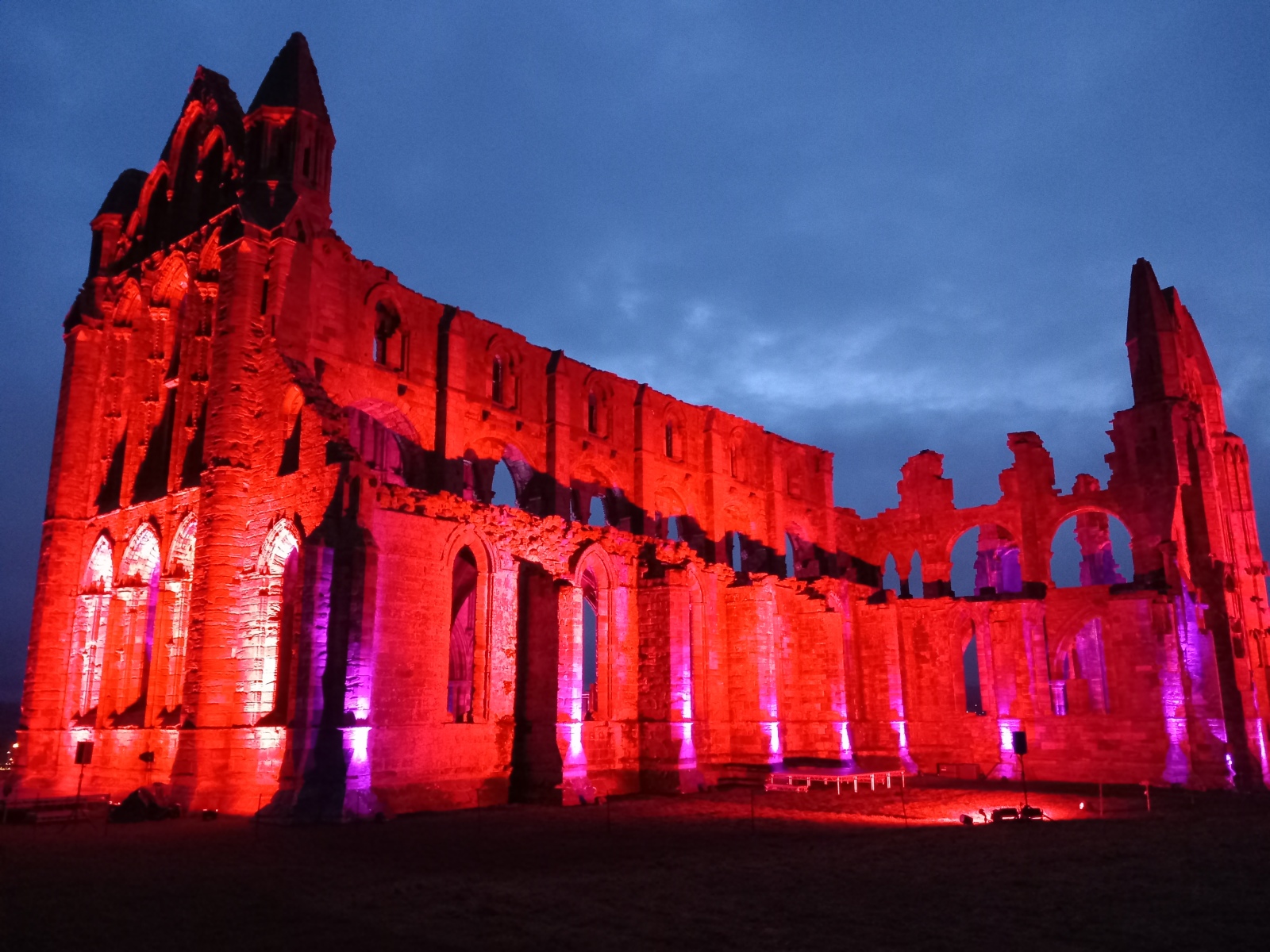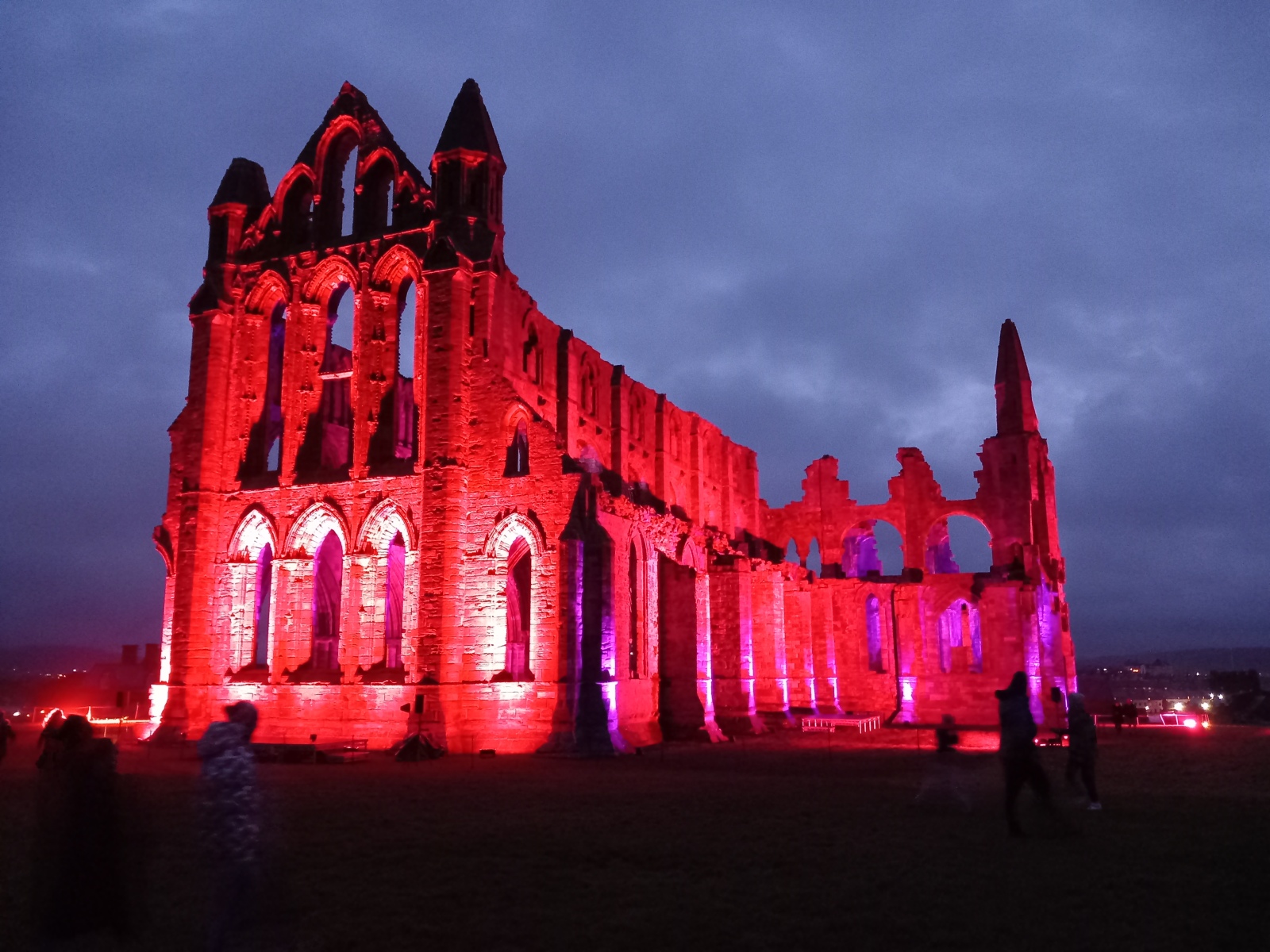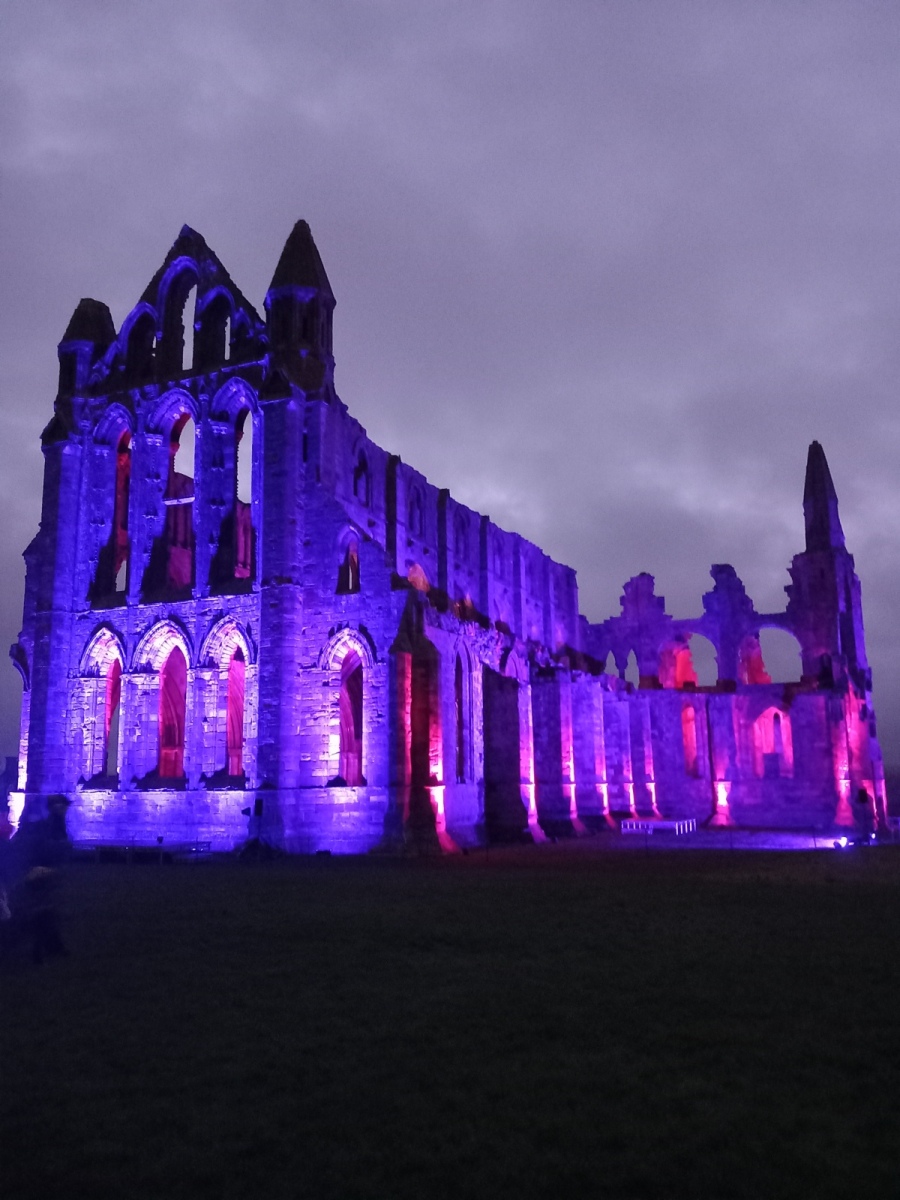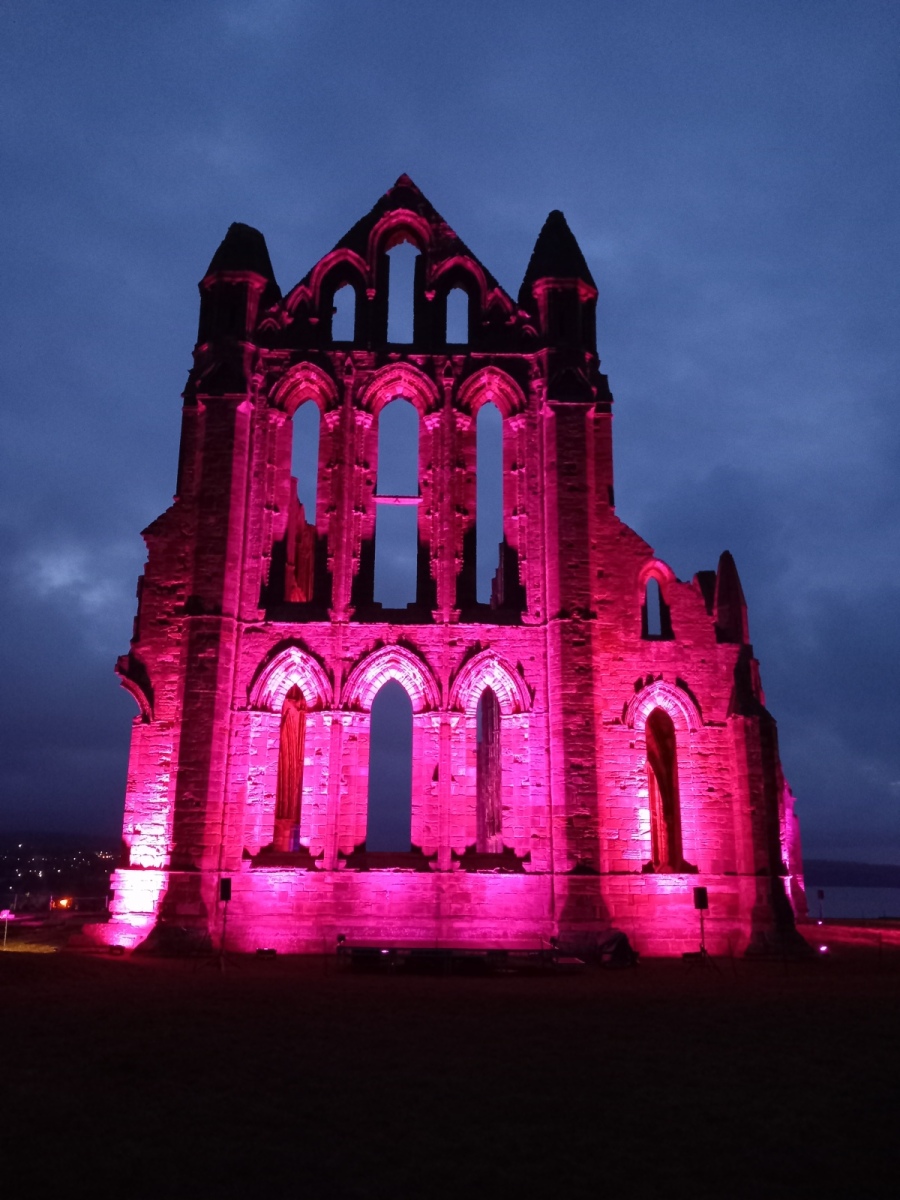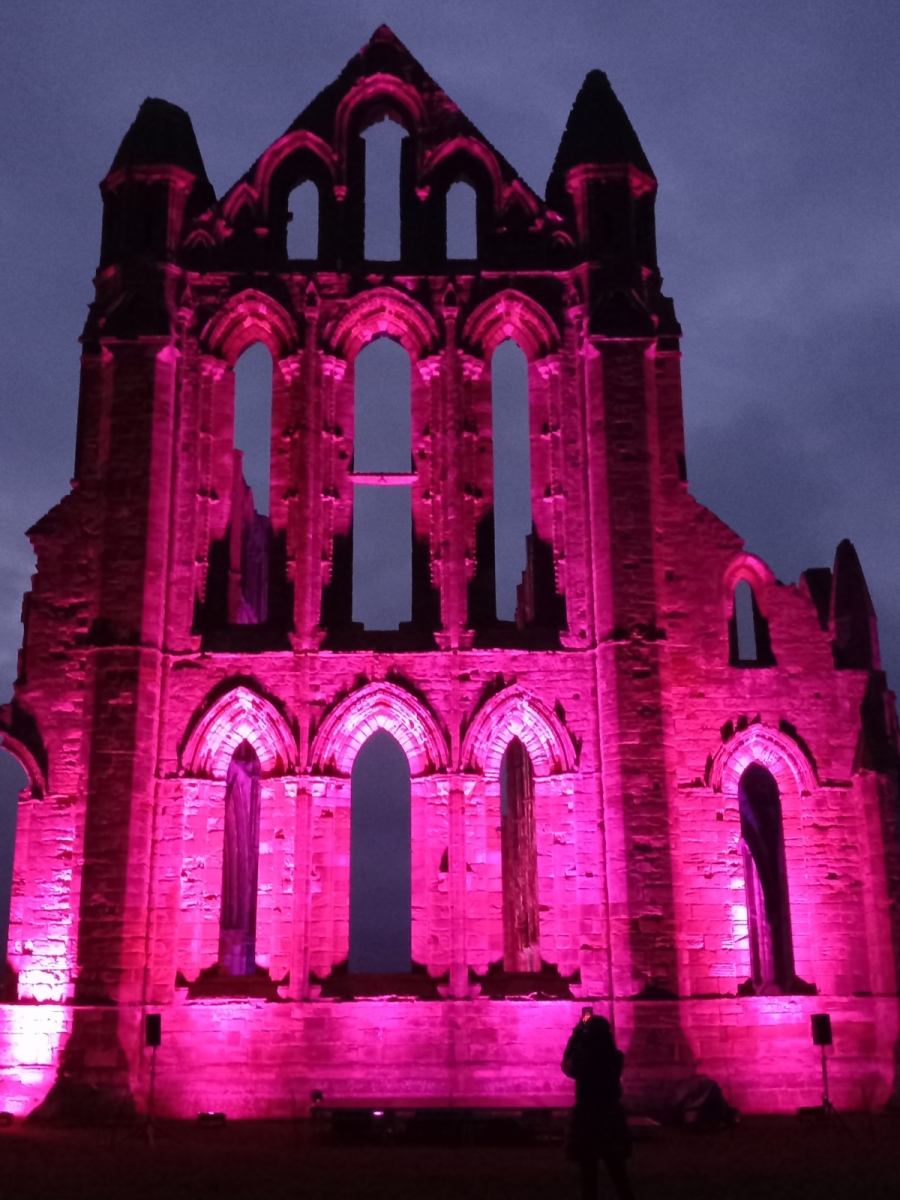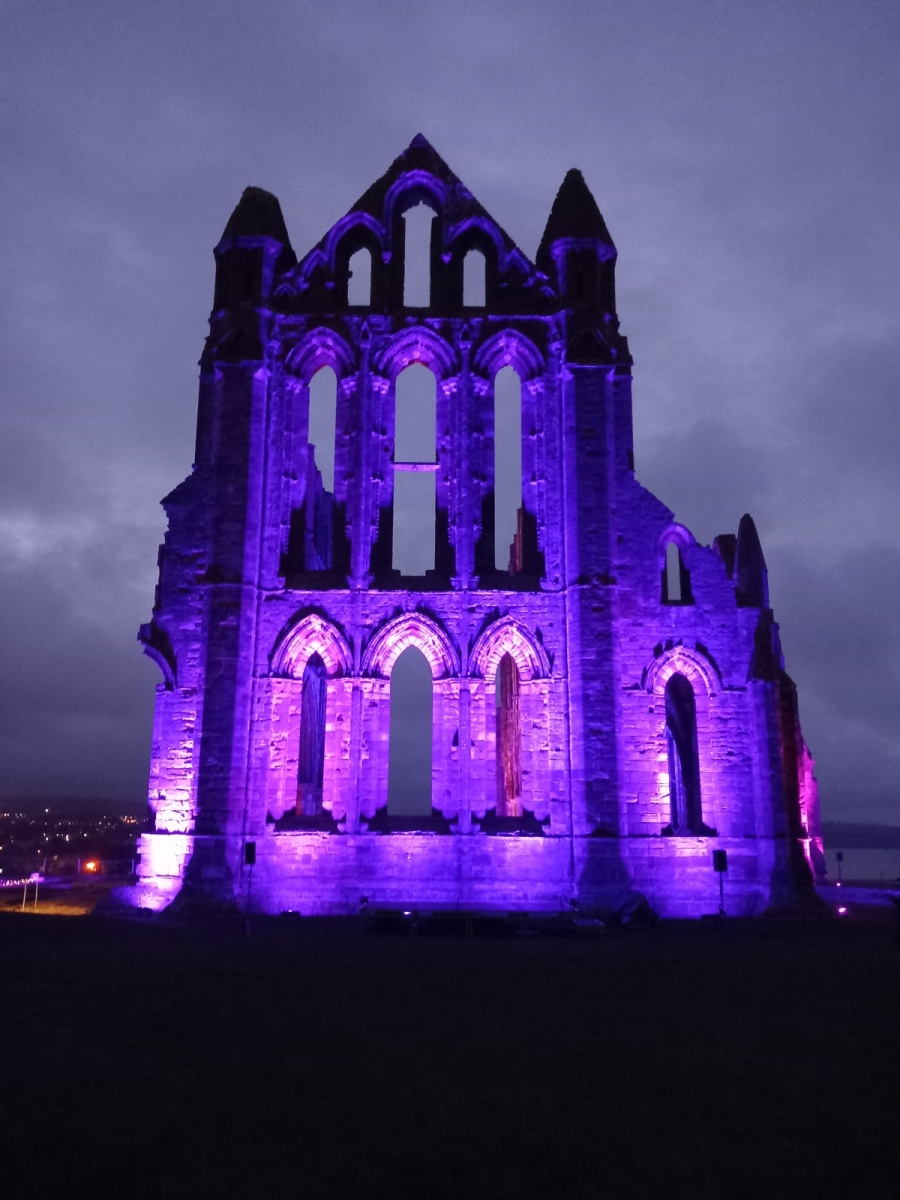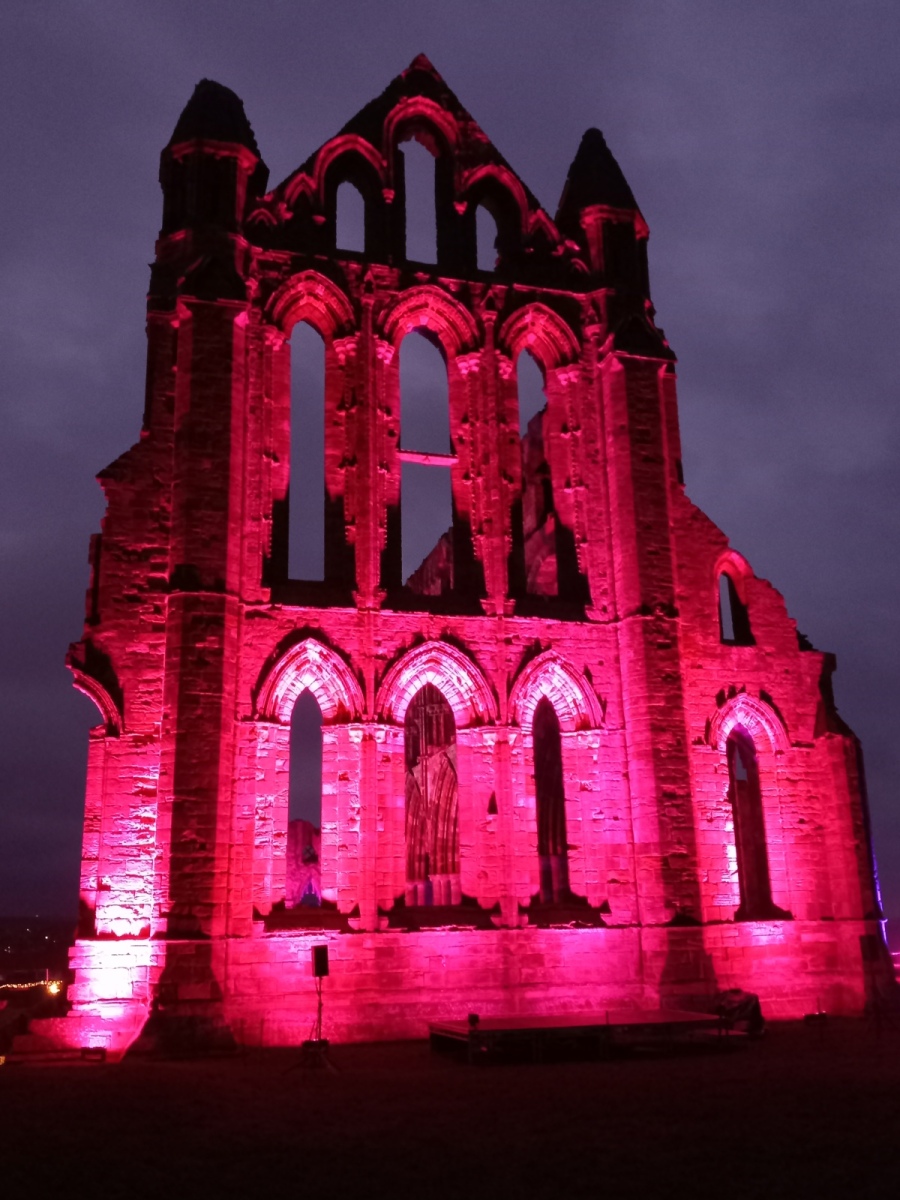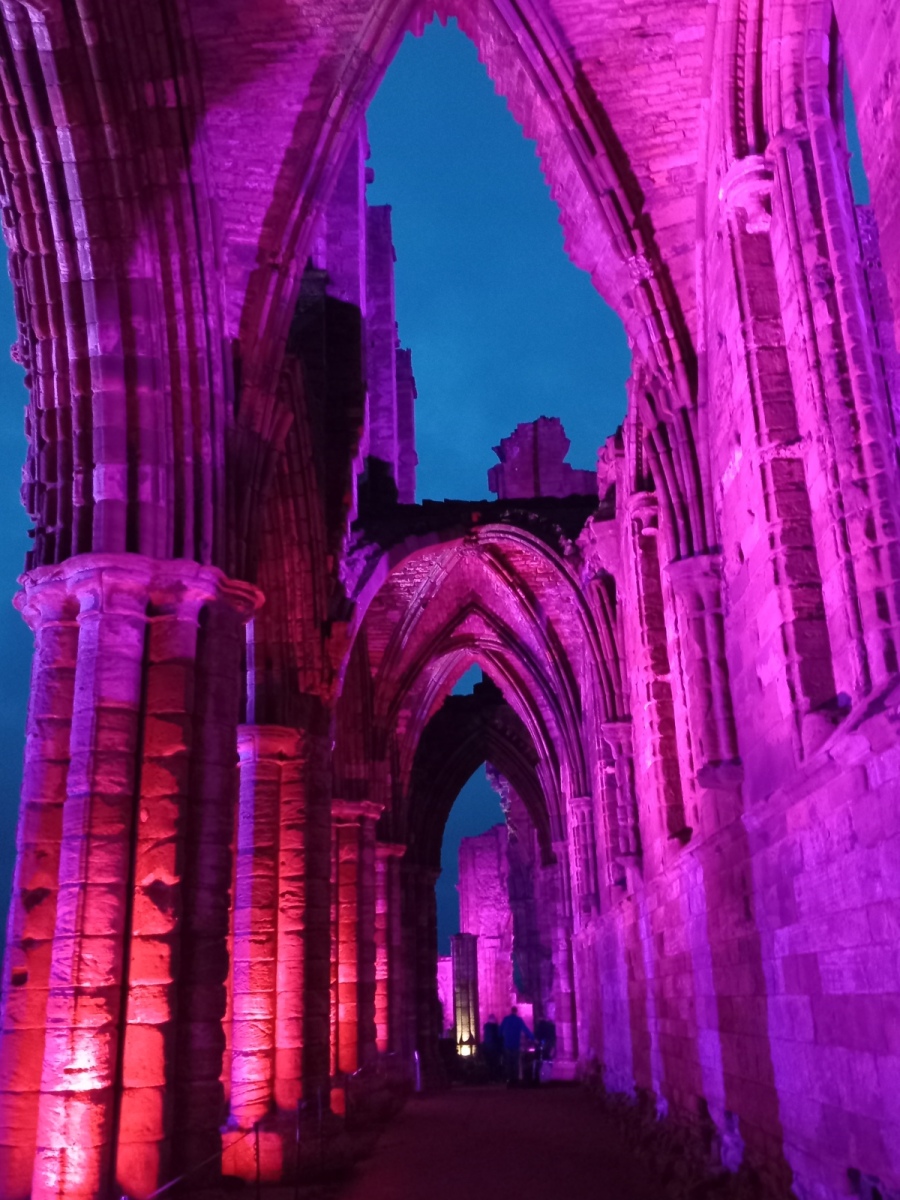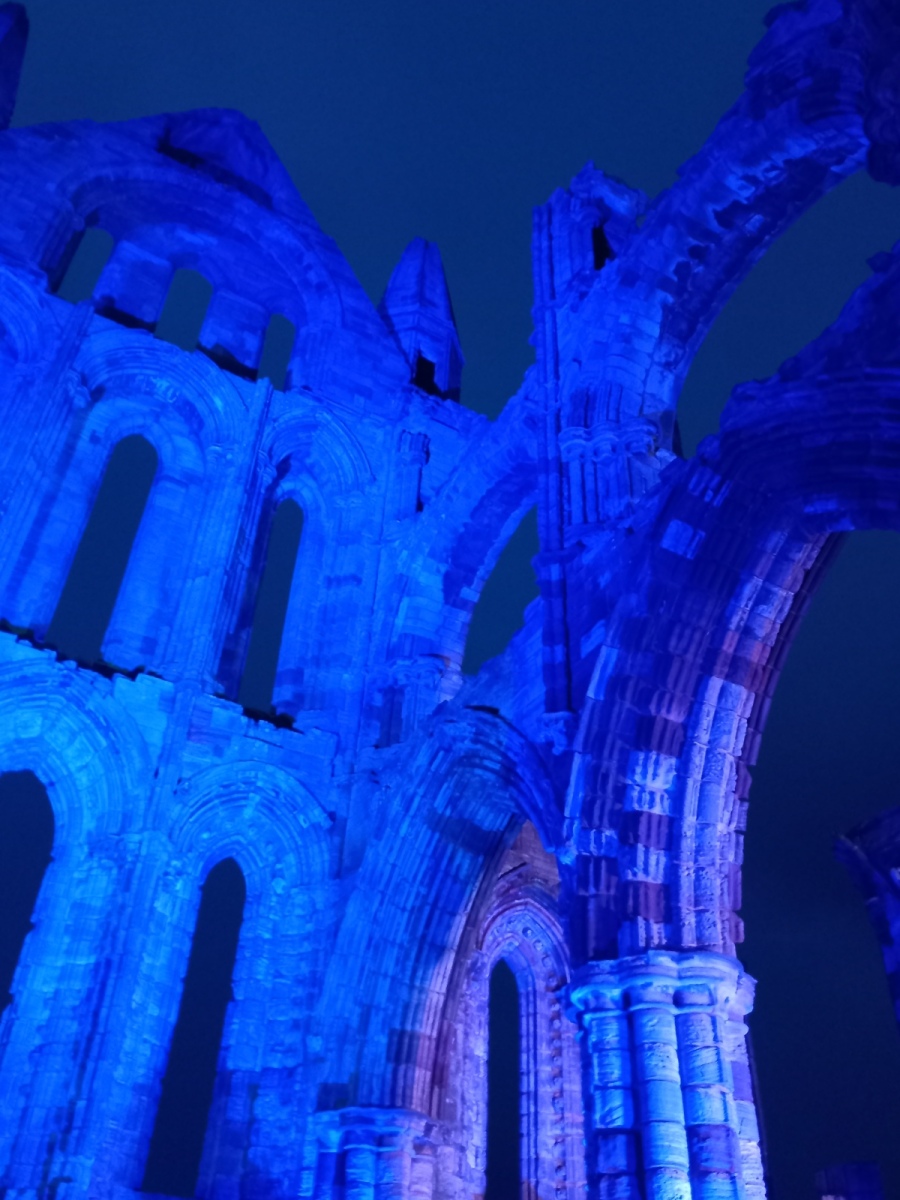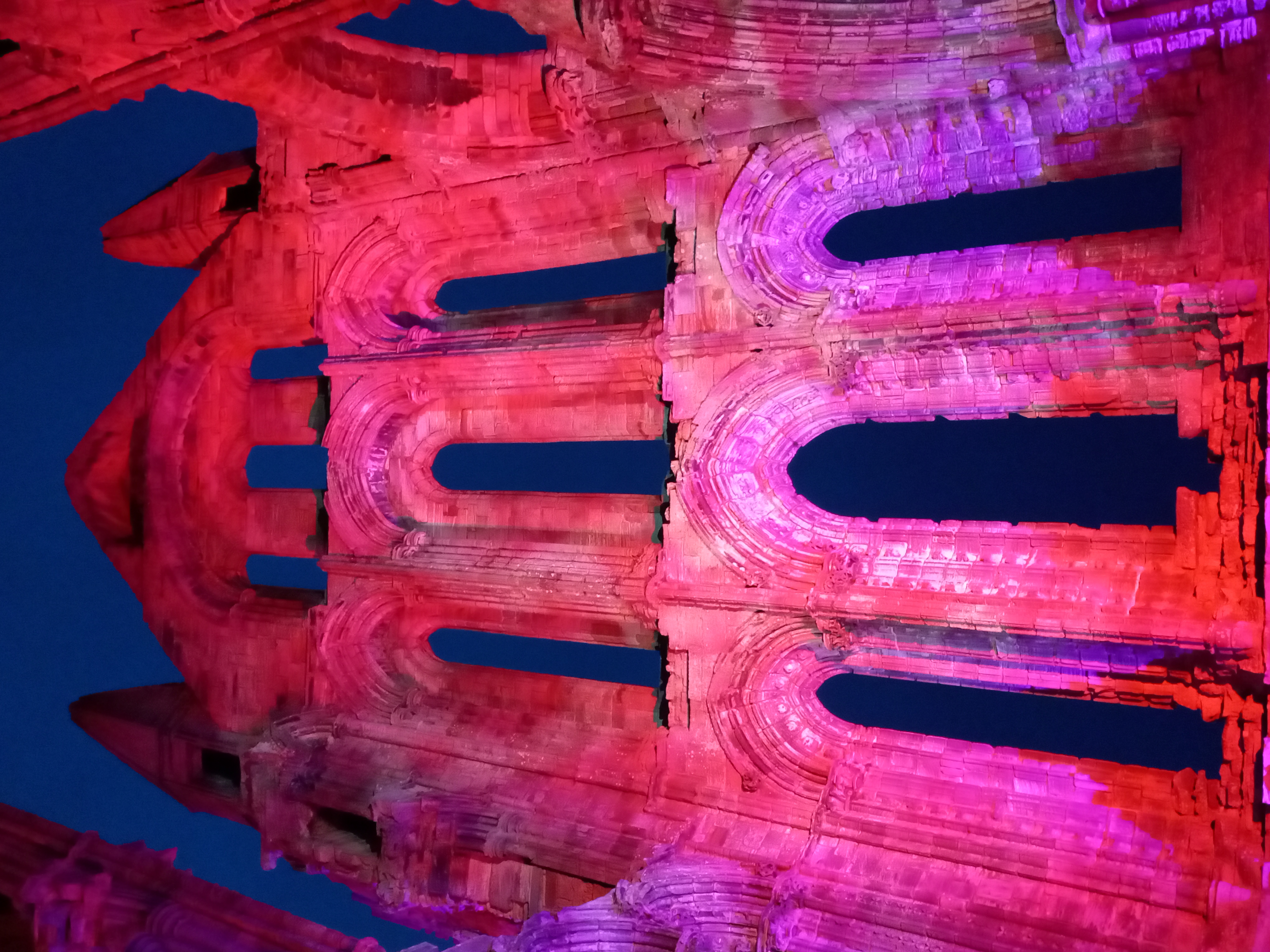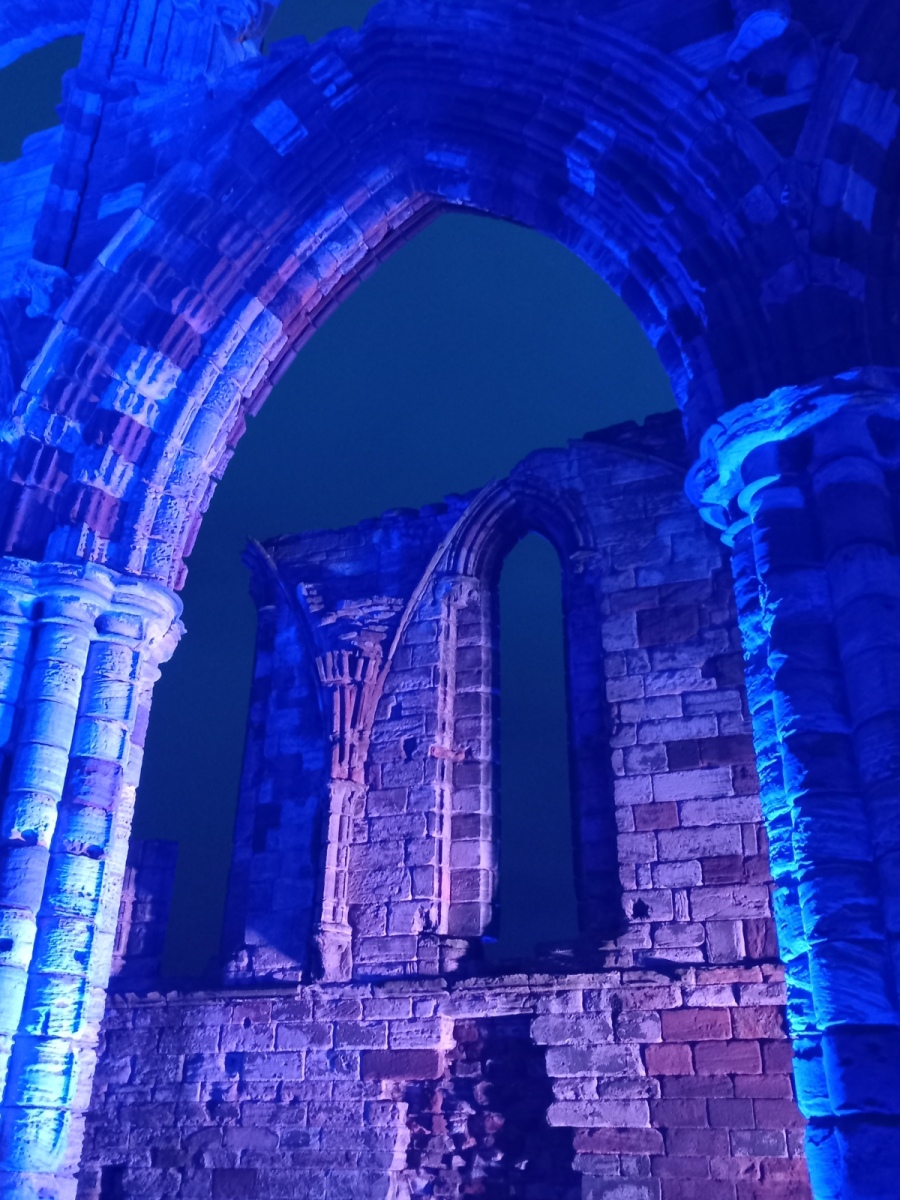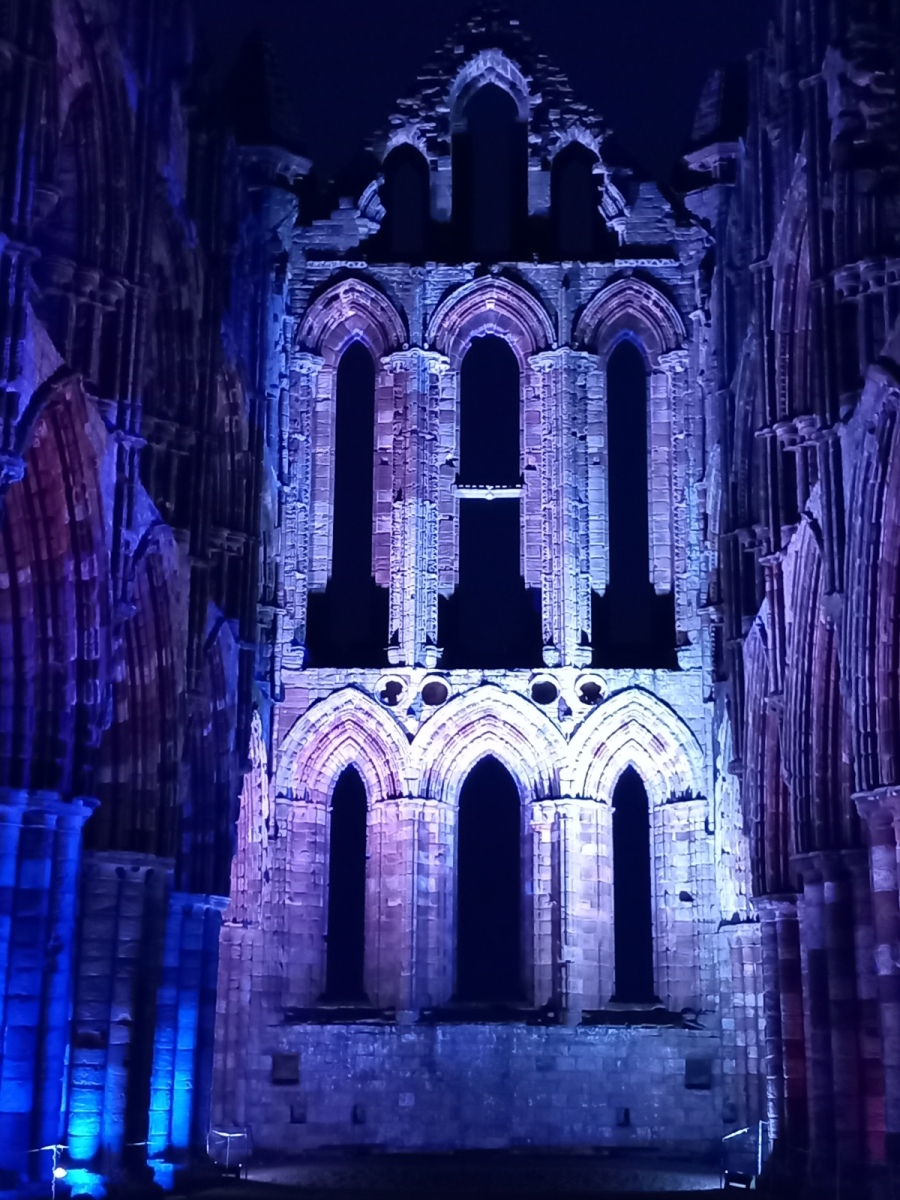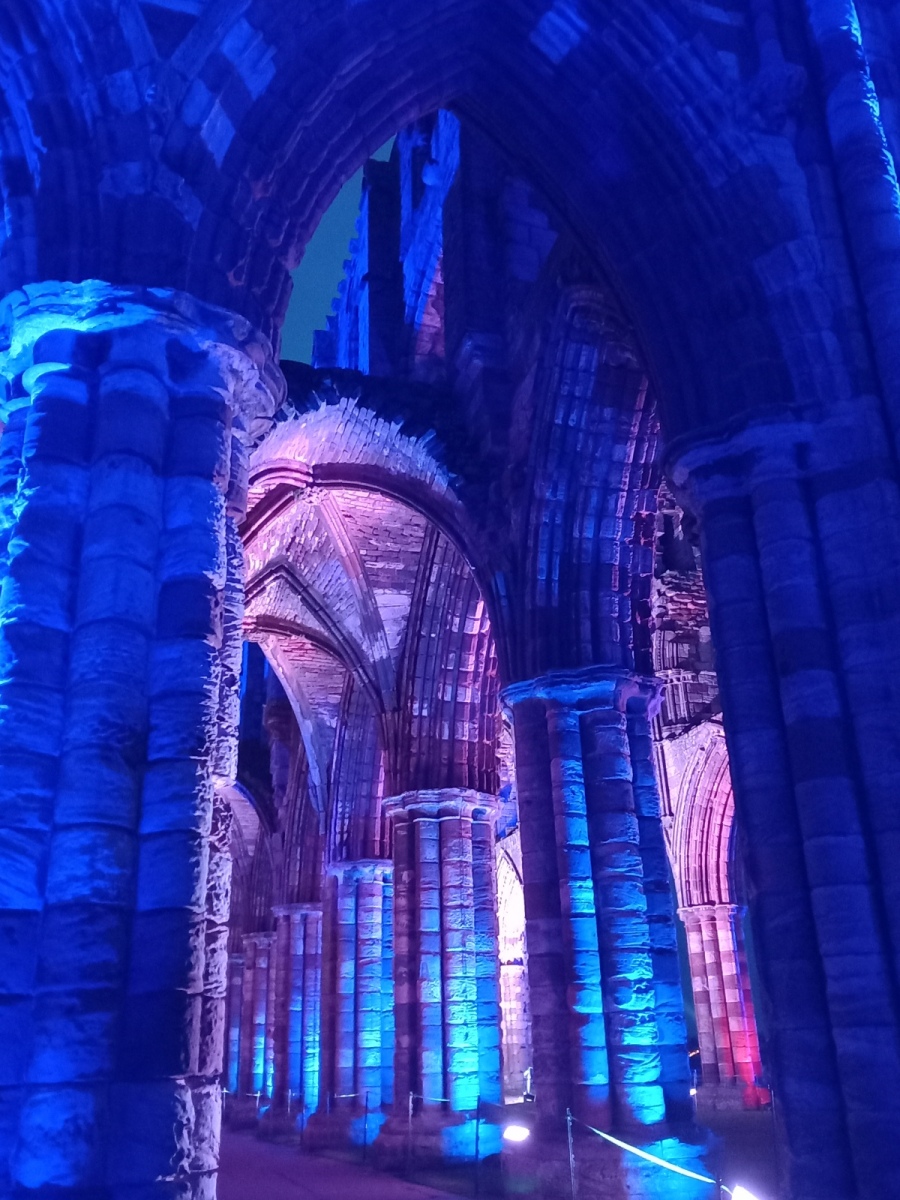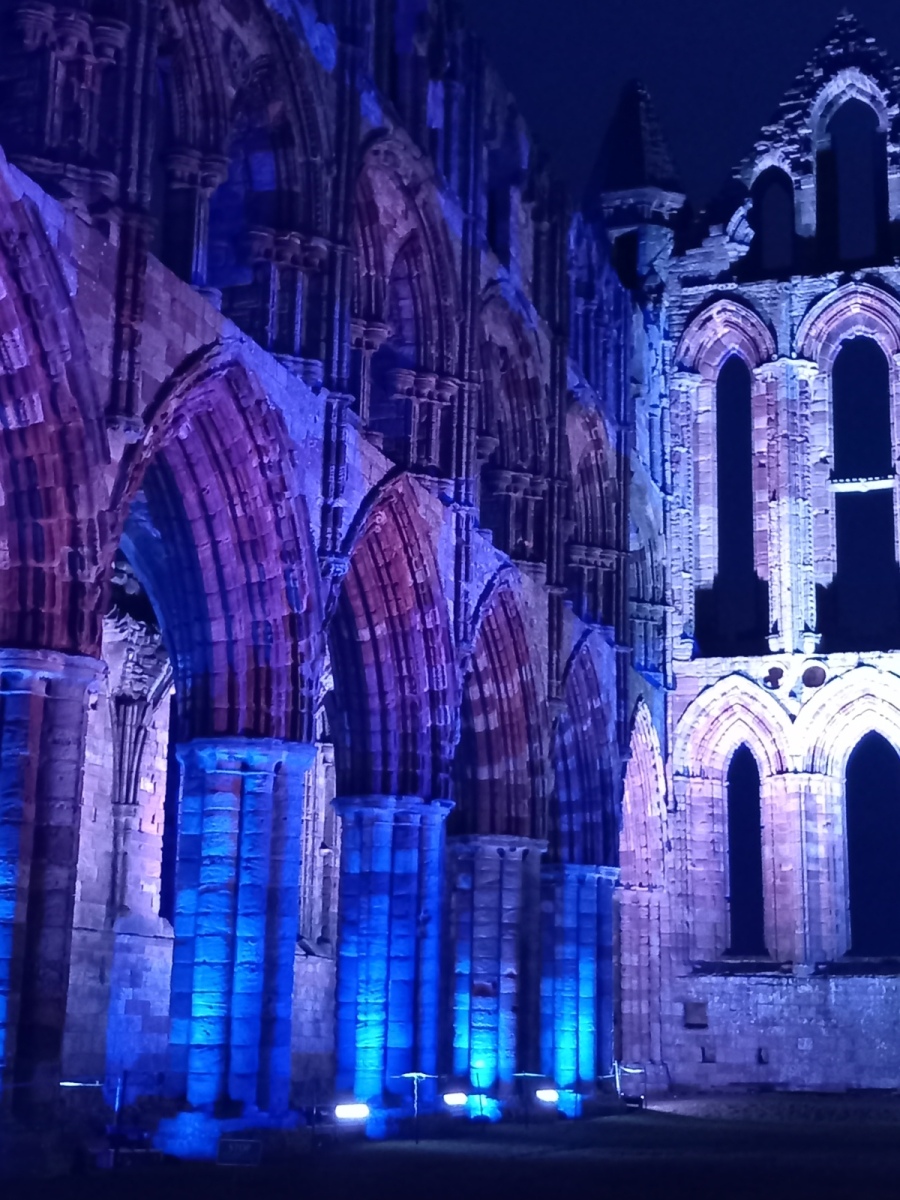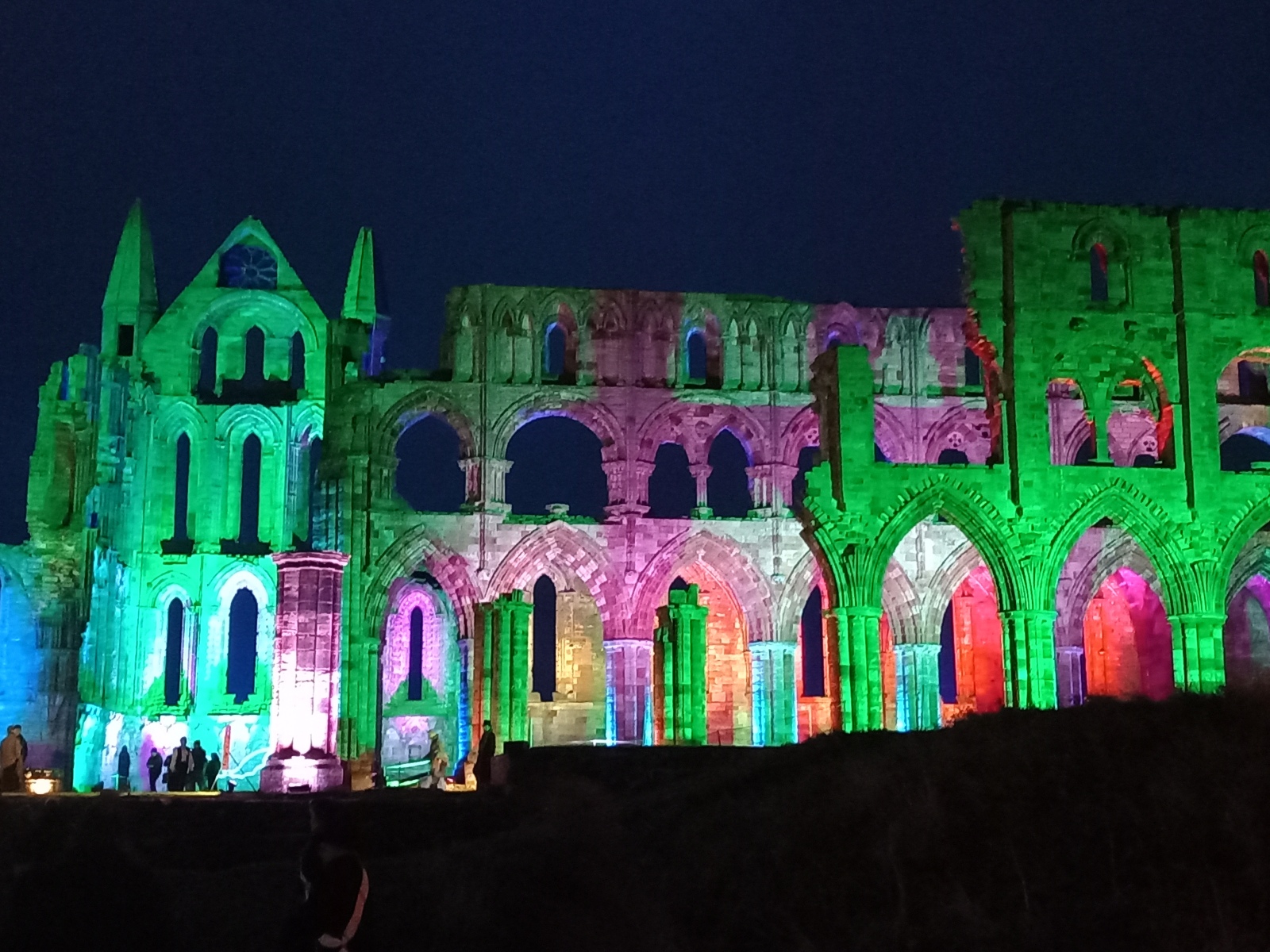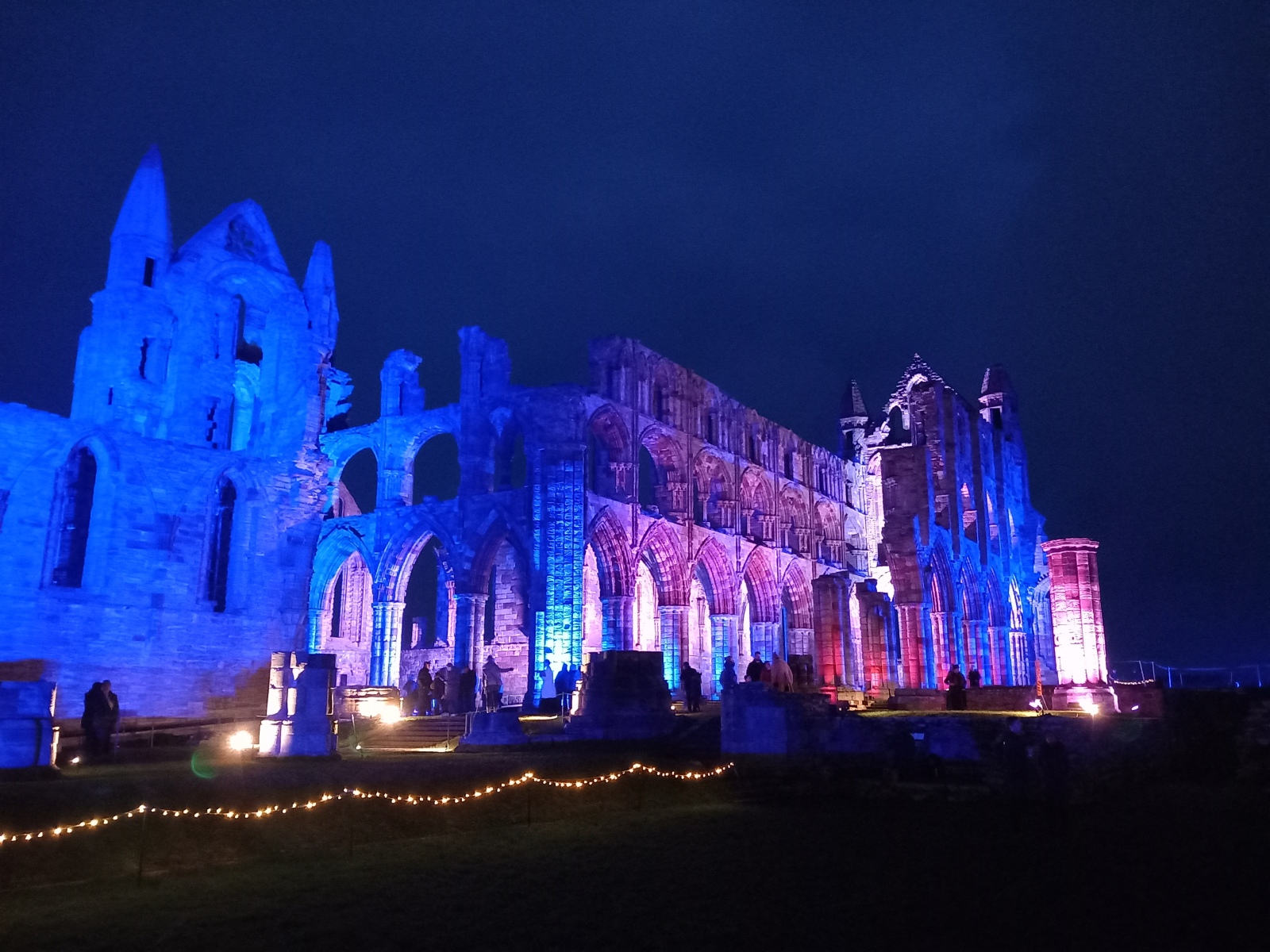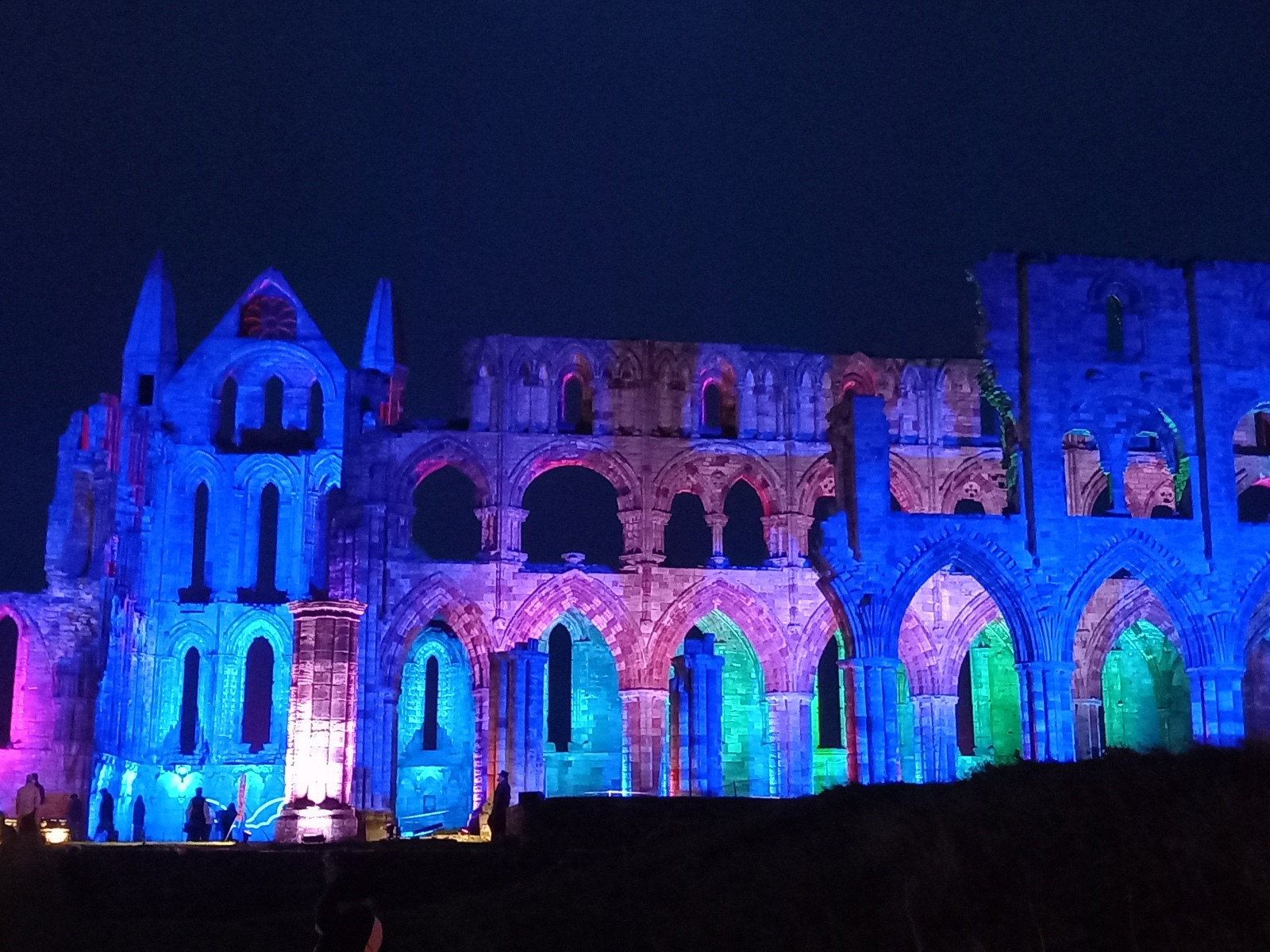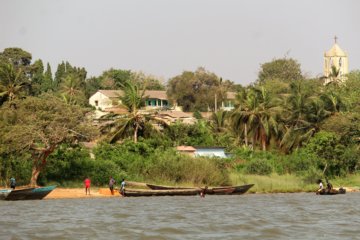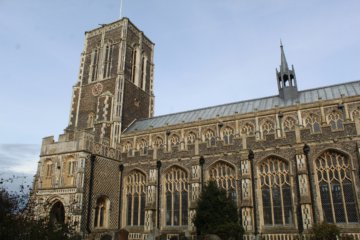The ruins of Whitby Abbey dominate the headland overlooking the fishing port and popular seaside town of Whitby, North Yorkshire. No visitor to the town can fail to be impressed by the picturesque ruins which appear gorgeously golden in the summer sunshine and broodingly forbidding on dark winter evenings. Read on for my complete guide to visiting Whitby Abbey.
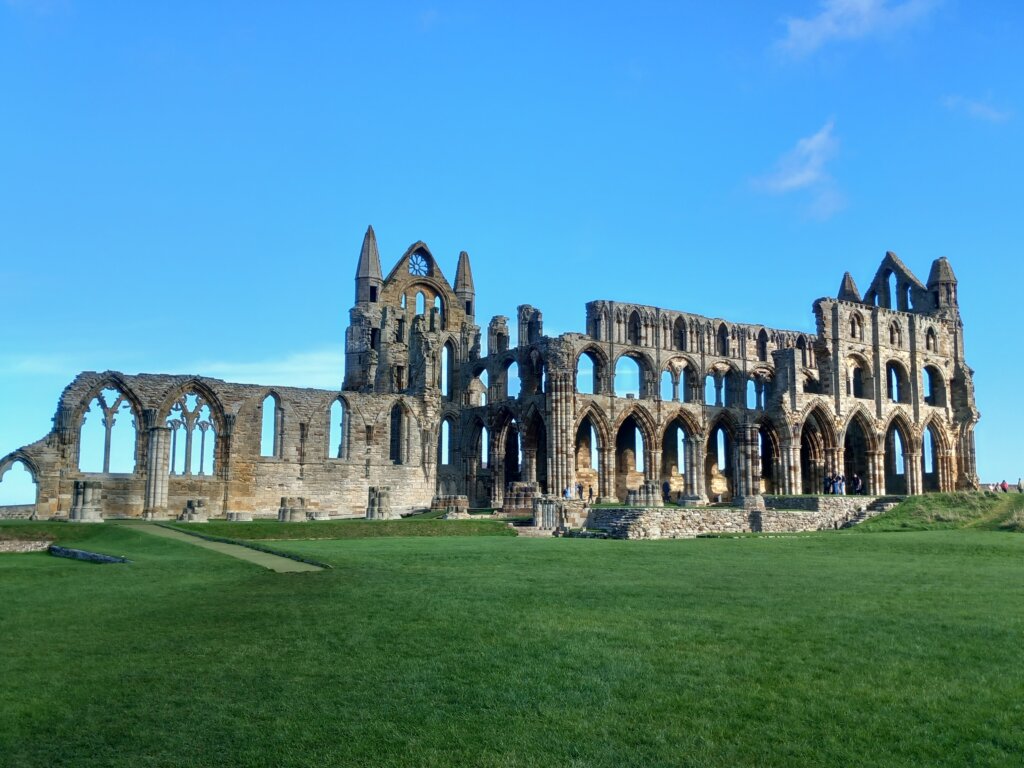
In this article
A Short History of Whitby Abbey
7th – 9th Centuries
At this time, there was a thriving Anglian community on the site where Whitby Abbey now stands. It centred around a minster founded by St. Hild. In those days, the place was known as Streoneshalh, thought to signify Fort Bay or Tower Bay, in reference to a supposed Roman settlement that previously existed on the site. This theory has never been proven. Both the church and the community had disappeared by the end of the 9th century, presumably as a result of Viking raids along the English coast.
Late 11th Century
A great Benedictine monastery was founded. The first church built on the headland was smaller than that of the Whitby Abbey ruins we see today. It was, nevertheless, an impressive stone building in the Romanesque style. It had five apses and a long nave and followed a classic Benedictine design which was used in a number of monasteries in Normandy, northern France.
13th Century
The 11th-century Romanesque church stood until the 13th century when abbots and bishops all over England were undertaking ambitious projects to rebuild their already large and impressive churches. The new abbey church in Whitby was built in the ‘Early English’ Gothic style and is a magnificent example of the type. The likely source for its design was the transepts of York Minster which was the grandest church-building project in the north of England at the time. Abbot Roger, who probably commissioned the rebuilding at Whitby, may well have employed masons from York.
Whitby’s Gothic church was started in around 1225 and took about 250 years to complete.
14th December 1539
Whitby Abbey was surrendered to Henry VIII’s commissioners as part of his ‘Dissolution of the Monasteries’ project. Henry Davell, the last abbot of Whitby, handed over the keys. At the time, there were 22 monks at the abbey. The annual revenues from the monastic estates amounted to £437. This made Whitby one of the poorest Benedictine houses in England, although it was still richer than most monasteries of other orders.
1540 Onwards
In 1540, Sir Richard Cholmley, also known as the ‘Black Knight of the North’, a member of a newly rich landowning family, leased the site of Whitby Abbey from the crown. He bought the freehold to the abbey land in 1555. Subsequently, he purchased other parts of the abbey estates. At the time of his death in 1583, he owned about 10,000 hectares.
The Cholmleys demolished the monastic buildings but preserved the shell of the church. It was still pretty much intact at the start of the 18th century, as shown in engravings done at the time. After that, large parts of it collapsed due to the effects of strong winds and heavy rains battering the coast. The south transept fell in 1736, and most of the nave collapsed in 1762.
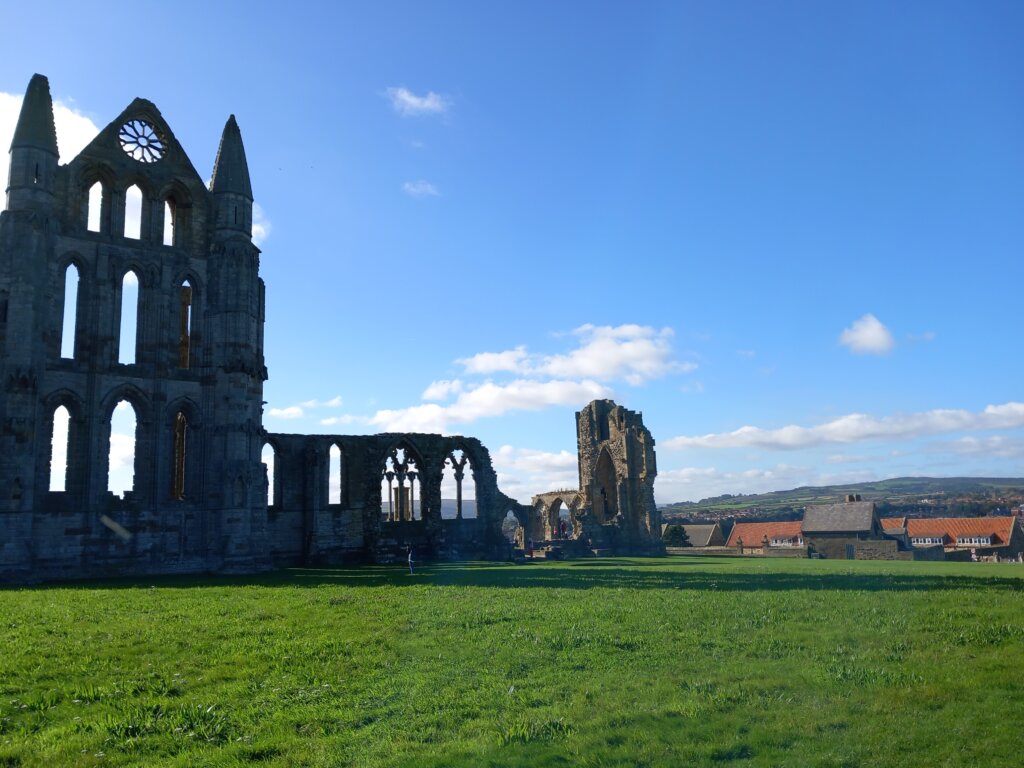
Late 18th and 19th Centuries
By the late 18th century, Whitby Abbey had become a picturesque ruin and a historic monument. With the arrival of the railway, Whitby became a popular tourist destination. The town’s popularity, and therefore that of the abbey ruins, was cemented when both were used as settings for Bram Stoker’s 1897 novel, Dracula.
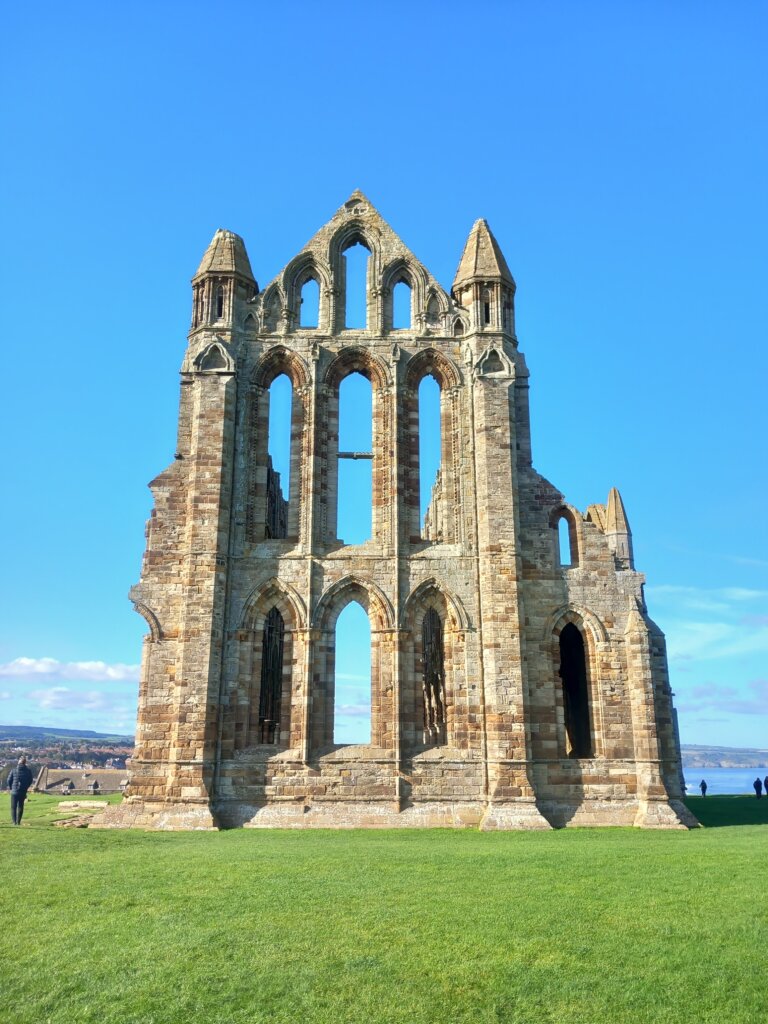
16th December 1914
A force of German cruisers bombarded Whitby, severely damaging the west front of the abbey. The Office of Works rebuilt it, using the historic masonry, in 1920.
1984
English Heritage took on the care of Whitby Abbey. What remains on the site now shows the ravages of time and weather. Maintaining the ruins today is a constant challenge.
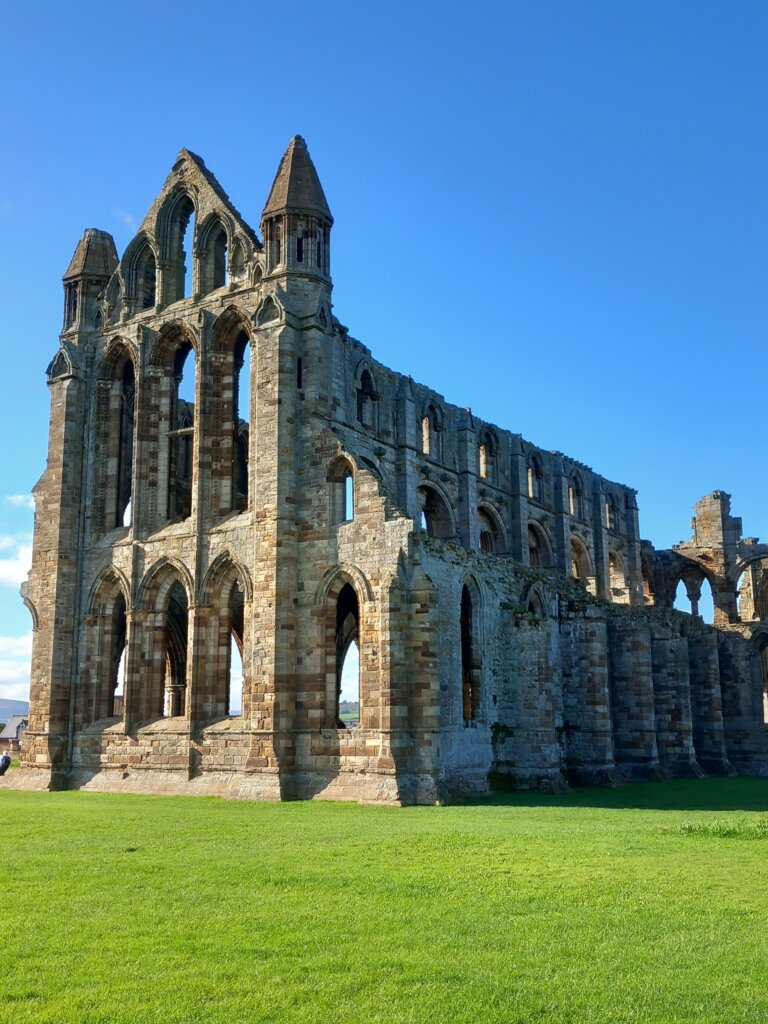
Abbey House
This building, which stands adjacent to Whitby Abbey, houses the abbey’s museum. The museum tells the story of the abbey with the help of objects like Anglo-Saxon crosses, medieval manuscripts and even a rare signed copy of Bram Stoker’s novel ‘Dracula’.
Abbey House, also known as Cholmley House, was a residence of the Cholmley family and their heirs, the Sticklands, from when they acquired it in 1540 up until the mid-nineteenth century. The building we see today is largely the work of Sir Hugh Cholmley II (1632 – 1689). He was an MP and was well-connected at the court of Charles II. He regularly entertained VIPs in his grand house facing the sea.
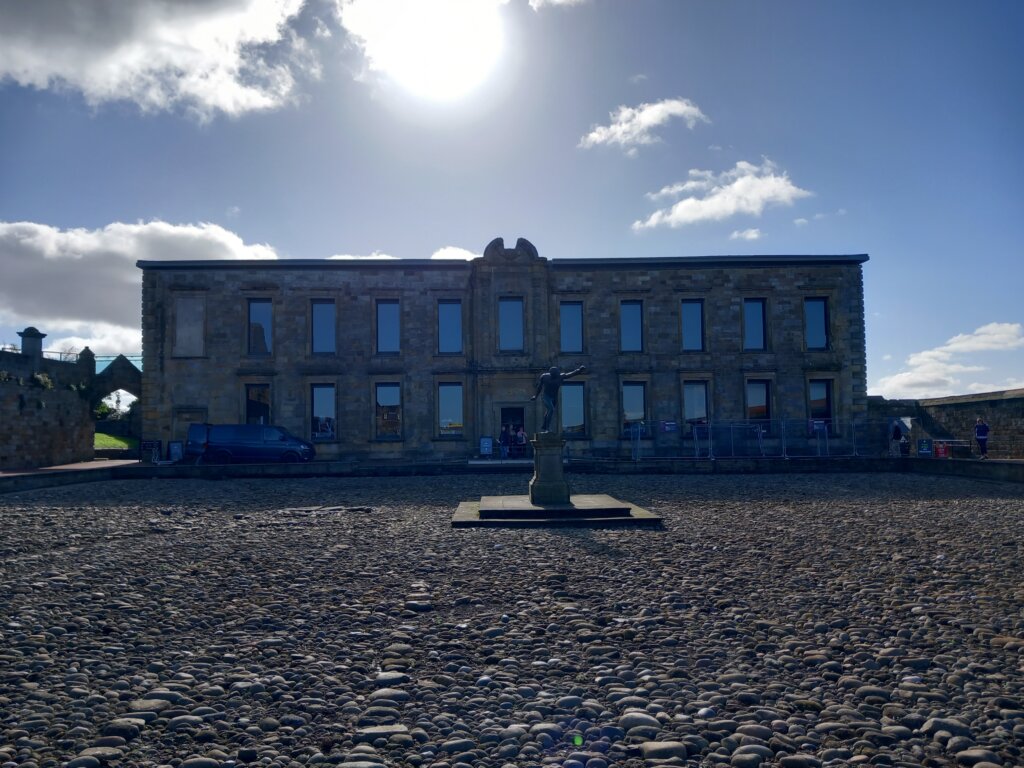
Whitby Abbey Illuminated
Every October, Whitby Abbey is illuminated. The lights really enhance the dramatic appearance of the ruins and create a magical atmosphere which can be enjoyed by visitors of all ages.
Visiting Whitby Abbey
Opening Times
- Every day – 10am to 5pm
- Closed Mondays and Tuesdays in winter
Admission Prices
- Adult – from £11
- Child (5 to 17 years) – from £6.50
- Child (under 5) – FREE
- Students and over 65s – from £9.50
- Family (2 adults, up to 3 children) – from £28.50
- Family (1 adult, up to 3 children) – from £17.50
- English Heritage Members – FREE
Getting There
Most people arrive by car, using the signposted turn-off from the A171. There is ample on-site parking. Alternatively, you can visit on foot by climbing the 199 steps from Whitby town centre.
Plan Your Visit to Whitby Abbey
If you’re travelling soon, please use these links!
Are you travelling soon? Use these links when making your bookings. These are the companies we use. It won’t cost you any extra, but we will earn a few pennies to help keep Happy Days Travel Blog going. Thank you!!
- Book your travel insurance with World Nomads. If you are a digital nomad or long-term traveller, try the specialist provider SafetyWing. (Never leave home without protecting yourself, your trip and your belongings!)
- Book your flight with Skyscanner
- Book your accommodation with Booking.com
- Book a tour with Tour Radar
- Book city tours and activities with Viator or Get Your Guide
- Check out our Resource Page for more companies we recommend.
Disclosure: This post contains affiliate links. If you click through for more information, or to make a purchase, it may result in a small commission coming my way. Please note that there is no extra cost to you associated with this. Thank you so much for supporting my site.
Join our mailing list

Sign up to receive our monthly newsletter. Keep up with what we're doing and be the first to receive special offers and insider tips.

